Robert Kubica saw the grass from the side of the roots. And he is still among us, even if with a mangled arm, because he had so much luck.
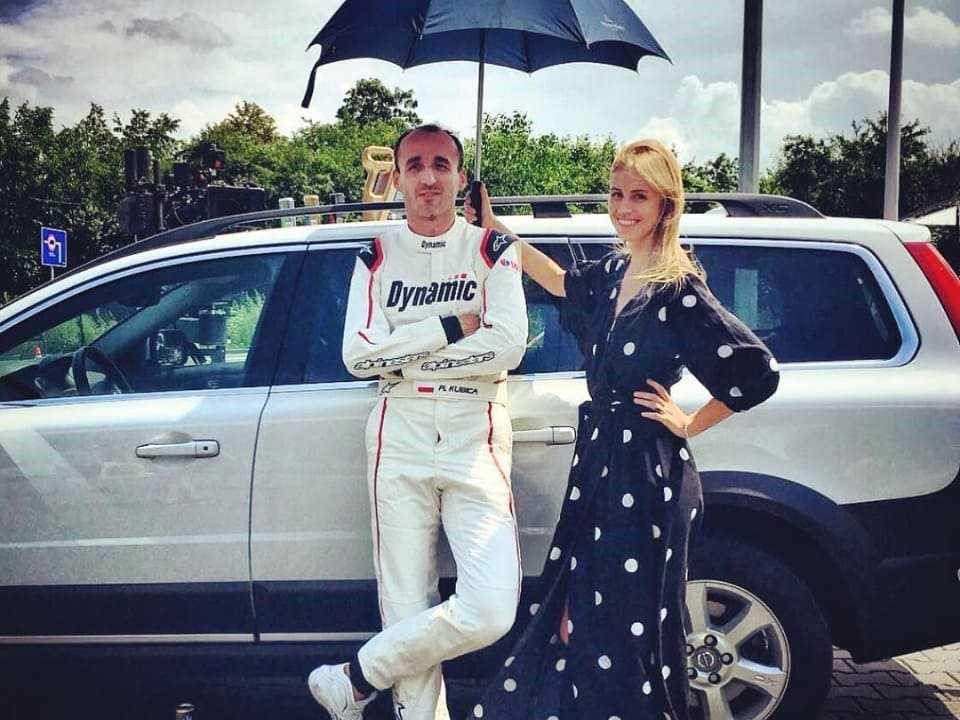
He got his first car at the age of four: “it had a four-stroke engine, no horsepower but still could do about 40kph”.
“When you are an F1 driver, there are two things you always want: one is to become world champion and the other is to drive for Ferrari”. Robert Kubica
“Unfortunately in motorsport, accidents can happen”. Robert Kubica
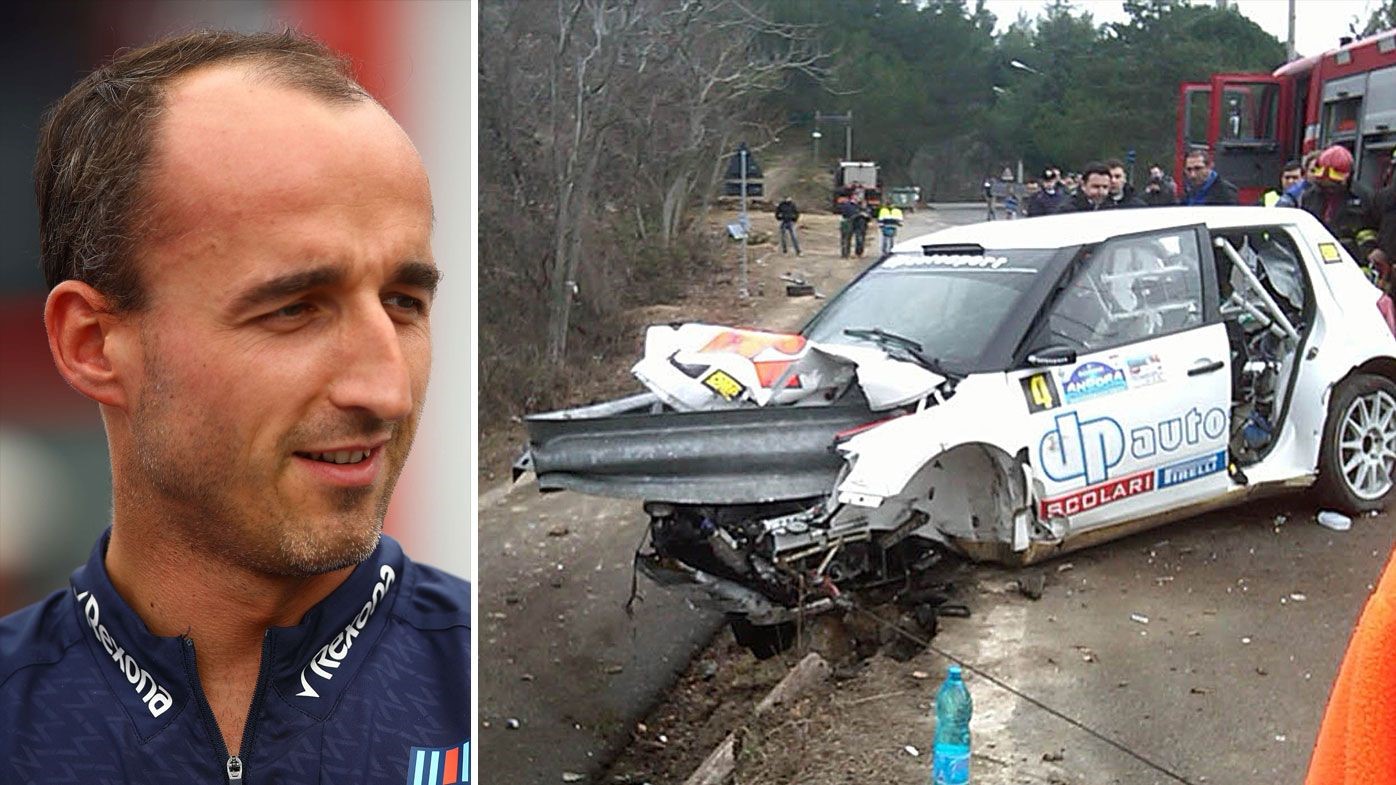
“My accident - 15 centimetres right and nothing would have happened; 10 centimetres left and I would not be here”. Robert Kubica
“I didn't know if I would get the chance to return to F1”. Robert Kubica
“It is one thing to drive a Formula 1 car and it is another thing to actually race it”. Robert Kubica
“I have my limitations which I never hide”. Robert Kubica
“I had to become left handed at 30 years old”. Robert Kubica
“I drive like my body and my limitations leave me to do it. After my accident, I discovered that to do a roundabout in the road car, you don't have to grab the steering wheel, you can use friction to turn”. Robert Kubica
“When you cannot have steak, either you eat egg or you don't eat. So, in the end, you eat egg and you enjoy it”. Robert Kubica
“I think there is only one person who can judge what I can do behind the steering wheel - and that's myself”. Robert Kubica
“I know my value. I don't have to look at lap times”. Robert Kubica
“I have never been ready 100% even when I was racing in my gold times”. Robert Kubica
“When you get to an F1 car and after one lap you see the pace is there, it is special emotions and I miss it so much”. Robert Kubica
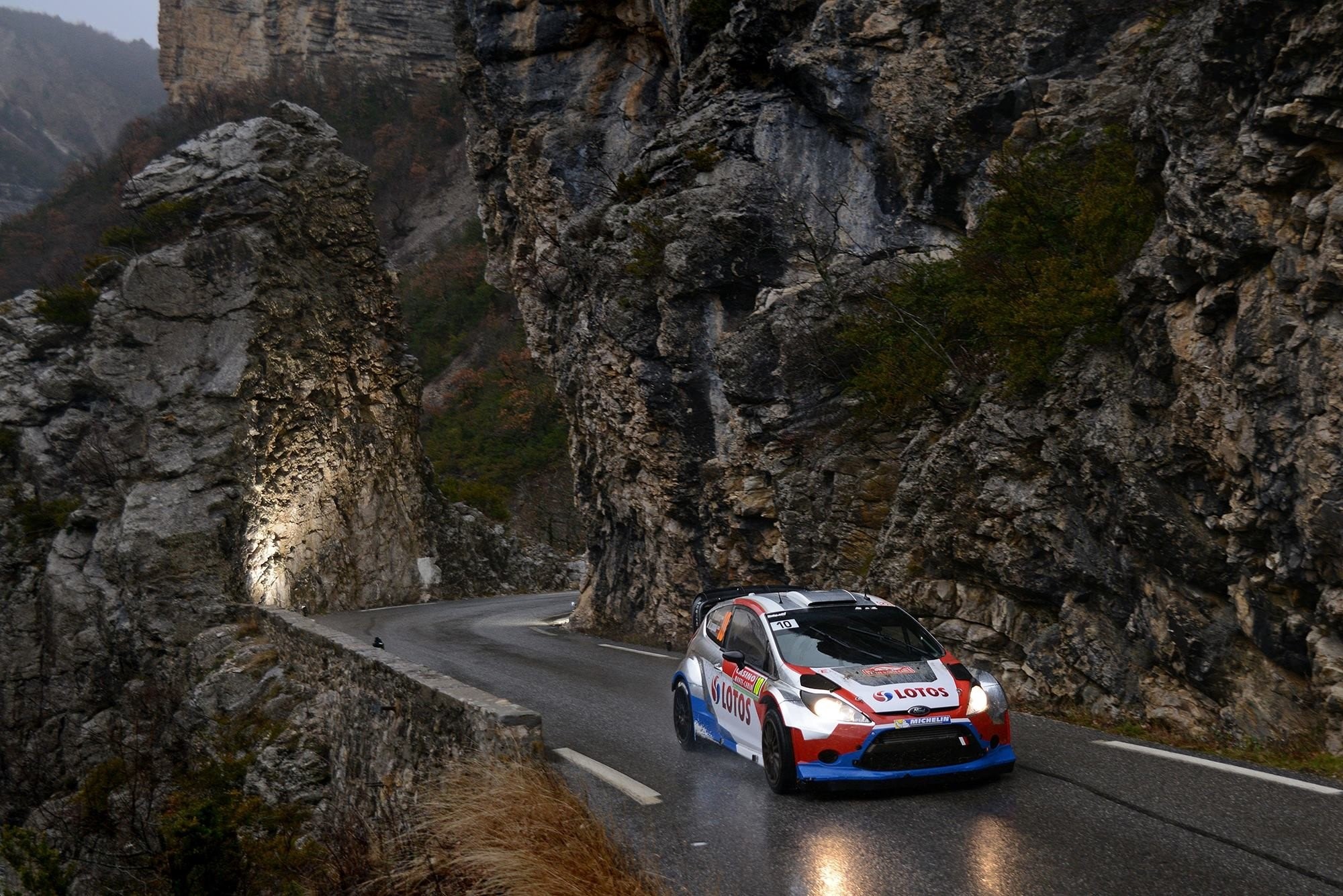
In the photo Robert Kubica in a Ford at WRC Rally.
“If I had to choose and had one week's holiday, I stay at home. But if I am at home and have nothing to do and have a choice, then I go rallying”. Robert Kubica
“When you are a race driver you see things in the race driver mode”. Robert Kubica
“I like to watch rallies. Every time I go, I park the car where the fans park - I don't have any special tickets or permission to go - and I walk six kilometers”. Robert Kubica
“The price for winning is not the same for your life”. Robert Kubica
“I don't think KERS will change the overall picture - the gaps between the teams won't get any bigger. And I don't expect more overtaking, especially not under braking. The braking distances of modern F1 cars are just too short to make a big difference”. Robert Kubica
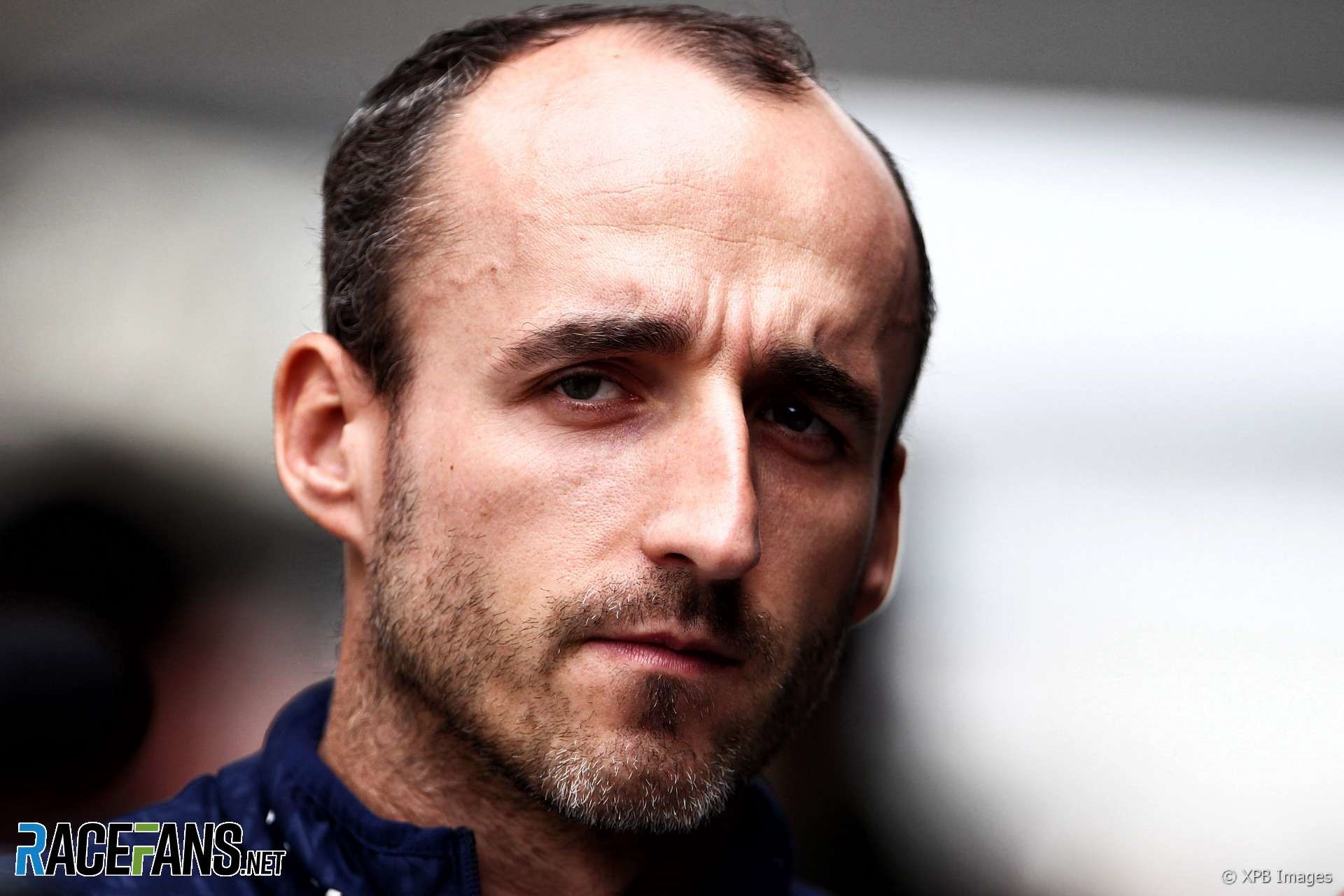
The Polish driver is more and more convinced of his great comeback in the circus, despite the terrible rallying accident in 2011: December 4, 2017.
"I learned to drive a car in my conditions and, honestly, I have more limitations in everyday life than behind the wheel. I'm in even better shape than the past. At the moment 90% of my driving skills are exactly the same as what I had before the accident”, Kubica emphasizes. I don't drive the single-seaters like before the accident, but the limits are lower than they seem. But now I have to work harder than before, because age doesn't help. The biggest difference is the head. It is amazing how much power the brain can have and how quickly it can adapt to different conditions. Unfortunately I had a career break due to the severity of the injury. In the end I learned to live with it, how to drive a Formula 1 single-seater in my conditions and I must say that I am very surprised by the results I have achieved".
Robert Kubica confirms he had signed a deal to join Fernando Alonso at Ferrari in 2012. July 12, 2018. By Will Dale. Source: FOX SPORTS.
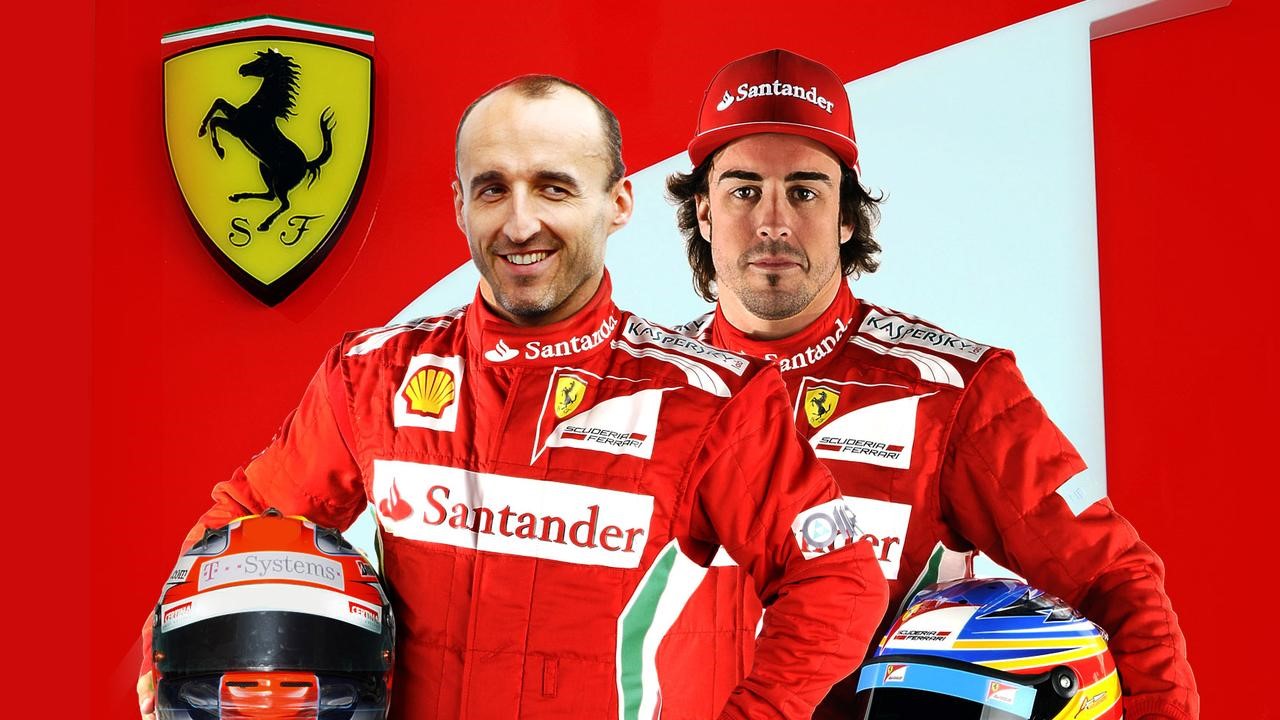
For 2012, Ferrari had signed Robert Kubica to complete a 'dream team' with Fernando Alonso. Source: FOX SPORTS.
Robert Kubica has finally confirmed something that has long been speculated.
The Polish F1 star had already put pen to paper on a deal to drive for Ferrari in 2012 before the horrifying rally crash that derailed his career.
“(The) first (goal) is to enter F1,” Kubica told Beyond The Grid, the official F1 podcast.
“Second is to become an established driver in F1, so you have good value, a good reputation, which is more difficult than to enter.
“Third, you win a world championship or become a Ferrari driver.
“I haven’t won a world championship; in the end I haven’t become a Ferrari driver. But I was very close…”
Kubica’s story is, sadly, well told by now.
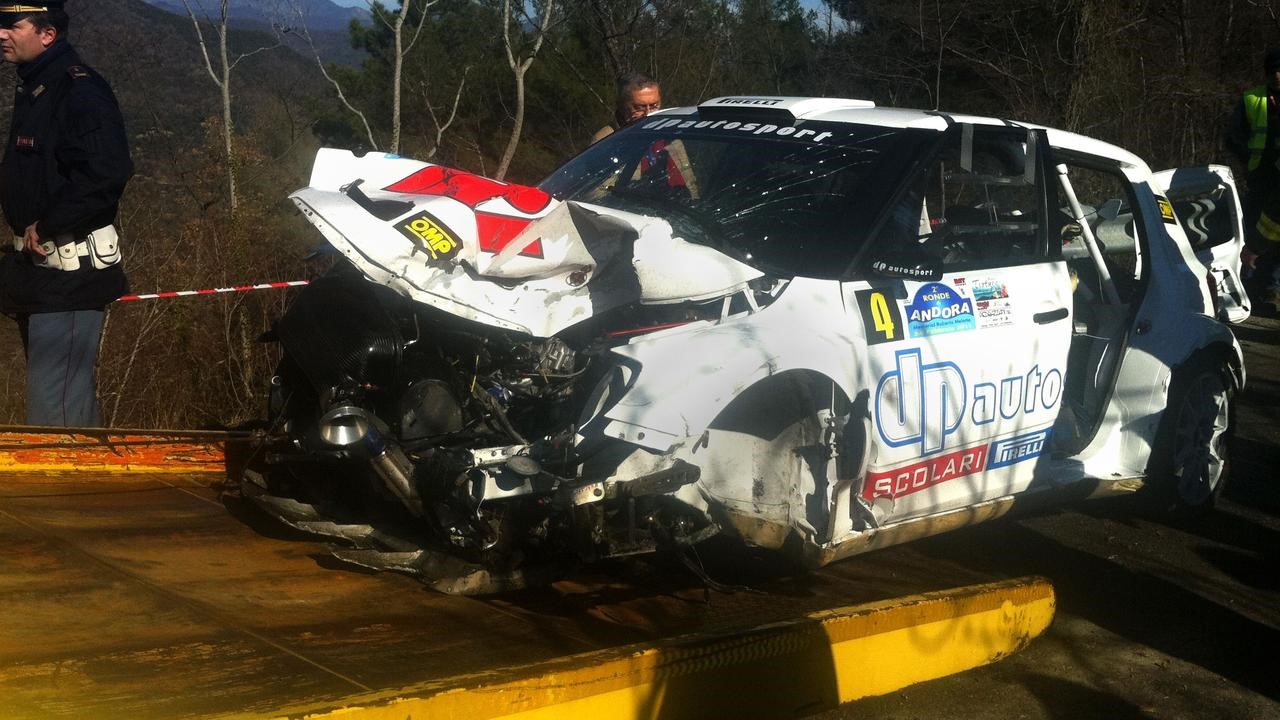
The aftermath of Kubica’s career-changing rally crash. Source: AFP.
He crashed while competing in the Ronde di Andorra rally in early 2011. The end of a guardrail sliced into the cockpit of his car, almost severing his right forearm.
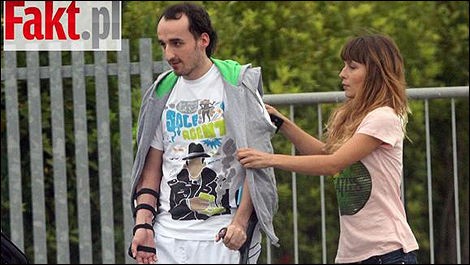
It was thought that the injuries would permanently end a promising F1 career. Years of surgeries and rehabilitation allowed him to regain enough movement in his right arm to drive again — but only in rallying. Kubica steadfastly maintained he would not even get back into an F1 car unless he was physically able to come back.
Last June, he did just that. He returned to his old Renault team for a private test at Valencia — where he proved quick — before taking part in one of the post-Hungarian GP test days for the squad.
2018 sees him as test and reserve driver for Williams after much speculation he might’ve landed a race seat, something that seemed impossible in the aftermath of his accident seven years ago.
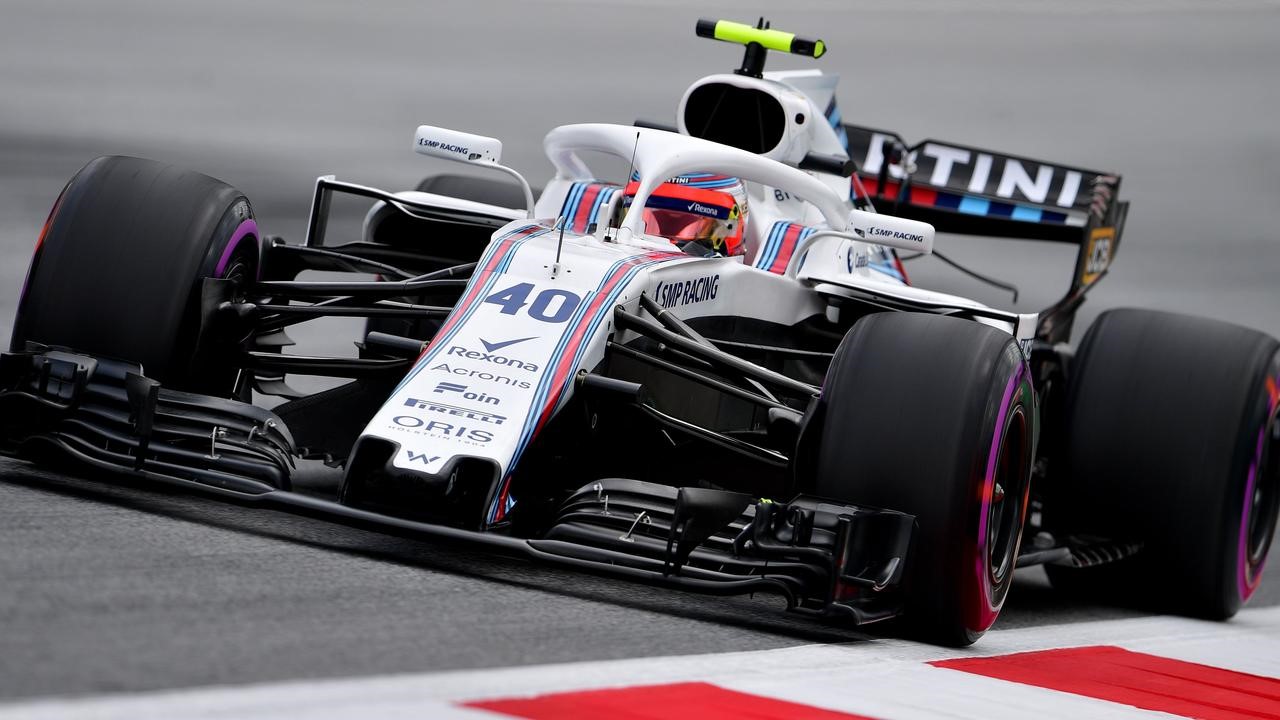
Kubica has driven for Williams in FP1 at the Spanish and Austrian GPs. Source: AFP.
Kubica says now that he used rallying to improve his skills on the track.
The sad irony is that the fateful rally on which he was hurt was always going to be his last.
“I was not happy to be as good as I was,” Kubica said.
“I need more. I thought rallying would give me this. And it really gave me (that). The problem is I paid too high a price.
“The fact is this was the last rally I was doing in my life, because I knew the team I was going to (in 2012) I was not allowed to rally.
“It was painful (not racing in F1) but it was not more painful because I knew I was going to race for Ferrari.”
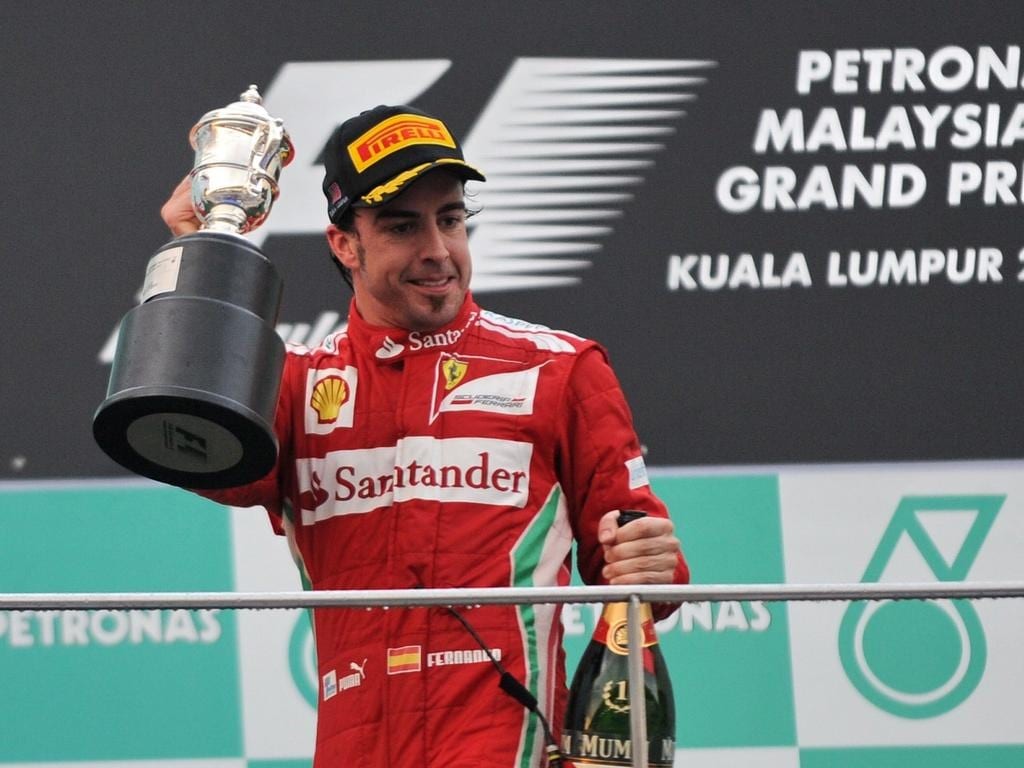
Alonso took three wins in 2012 but fell three points short of the title. Source: AFP.
At the time of his crash Kubica was widely regarded as the quickest driver in the sport, achieving front row starting positions in 2010 with a Renault that had no right to be that high up the grid.
With the 2012 Ferrari, a sizeable step ahead of the Renault/Lotus he would have driven in 2011, there’s no doubt Kubica would have added more wins to a career tally that unfairly shows just one.
And after all, Fernando Alonso nearly won the championship with it.
Which begs the next question: how would Kubica have fared against Alonso?
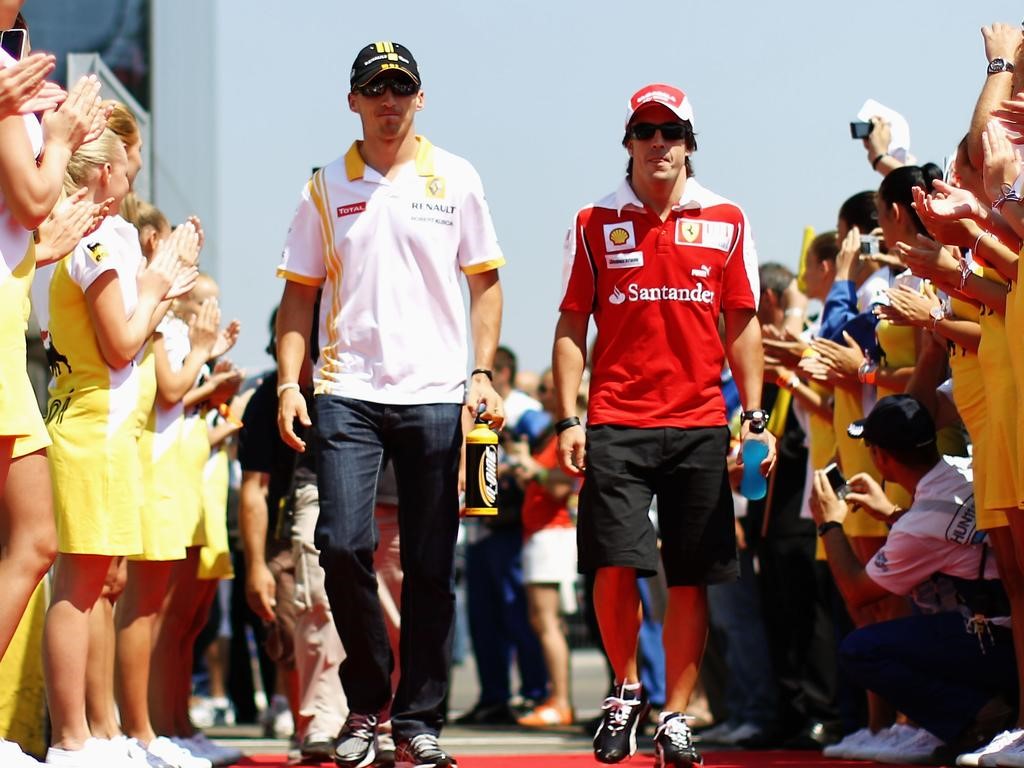
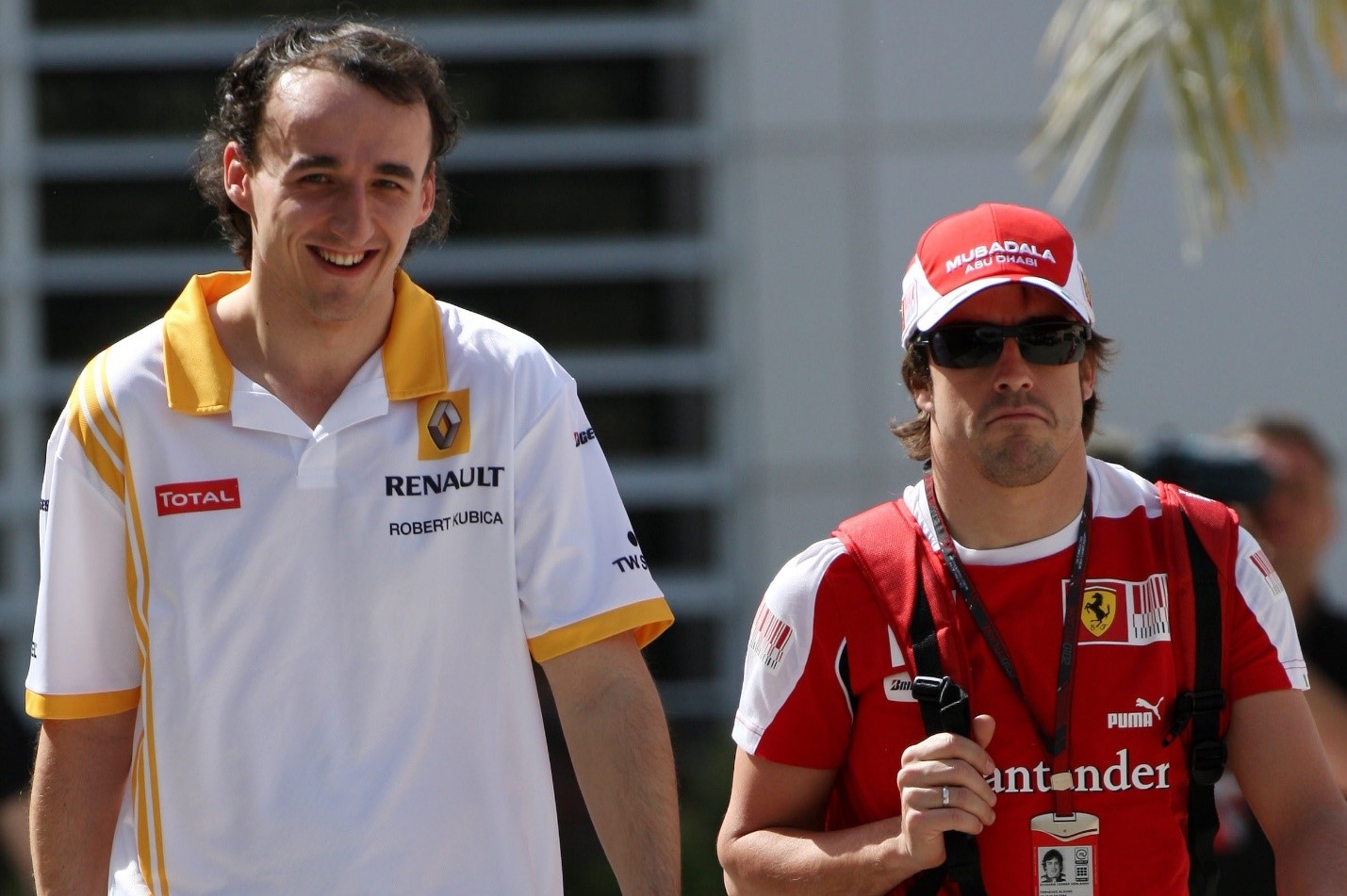
Kubica and Alonso in 2010. Source: Getty Images.
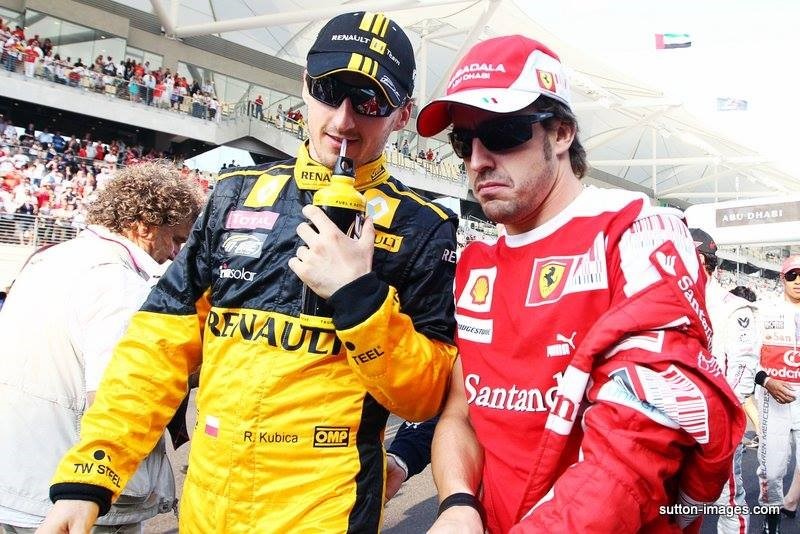
“If I were a team principal I would hire Kubica. He was the best in karts, he always won, he is the strongest." Fernando Alonso
It’s a fascinating prospect. F1’s fastest driver versus it’s best racer. Even Alonso said, for his money, Kubica was the best driver on the grid.
The closest comparison of a squad so stacked with talent on today’s grid is Red Bull’s roster of Daniel Ricciardo and Max Verstappen.
Kubica could conceivably have had the edge over Alonso on speed, but the Spaniard’s cunning, guile and racecraft over a championship campaign would have probably had him higher in the standings.
Those were all aspects Kubica had yet to have the chance to demonstrate in a title fight, whereas Alonso already had multiple championship challenges to hone those skills.
With time, there is no reason to think Kubica could not have been world champion with Ferrari — were it able to give him a car capable of doing so.
Just as intriguing would have been the internal politics.
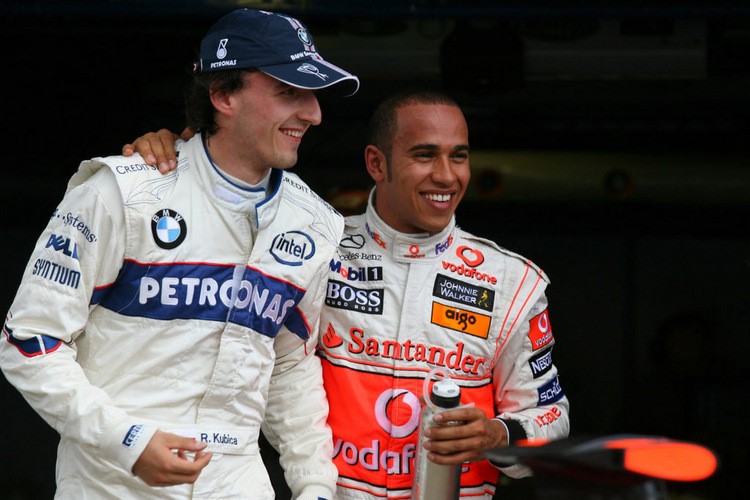
Lewis Hamilton and Robert Kubica back in the day.
Kubica would almost certainly have been Alonso’s closest-matched teammate since his one year at McLaren with a rookie Lewis Hamilton.
That may have reduced the Scuderia’s reliance on Alonso for direction and results and diminished the amount it kowtowed to him in the face of the squad’s flagging overall performance in 2013-14.
But would they have needed him?
Kubica’s 2010 season fighting a long hand as Renault’s underdog showed he could confidently lead a team. A couple of more years fighting at the front would have seasoned him for a title battle or two.
Sadly, it’s only a what if...
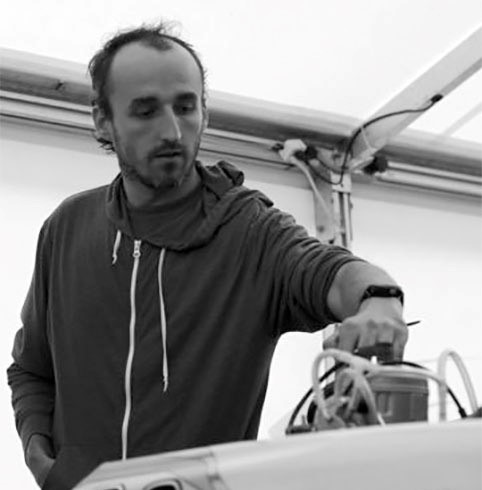
Overtaking fear. Kubica and the return as a survivor. November 22, 2018. The accident in the rally, the surgeries on his hand. Then the announcement in Abu Dhabi: the Polish will drive a Williams in 2019.
A return as a romantic hero, that of Robert Kubica. "It is the end of a journey, more of a life than as a driver, it was a challenge on a human level". At almost 34, after eight years lived as in a nocturne by his compatriot Chopin, full of melancholy and torments, the Polish will take back the wheel of a single-seater from 2019. He will wear the white overalls of the former glorious Williams, together with George Russell.
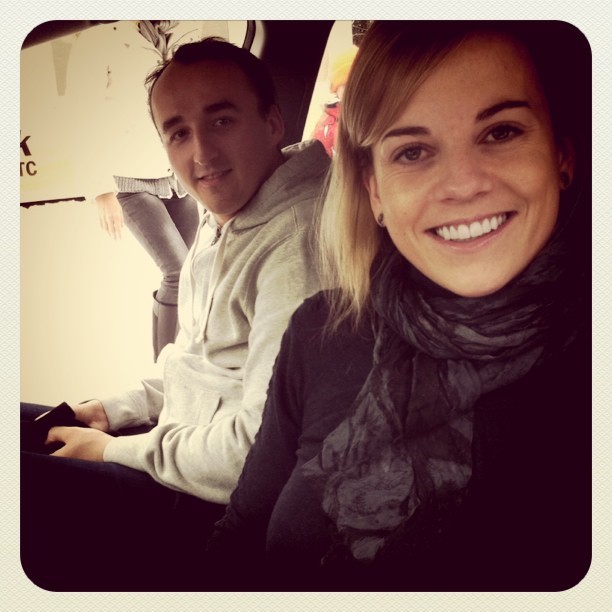
Robert Kubica and Susie Wolf.
The Observer. Robert Kubica interview. Giles Richards. March 10, 2019.
On the eve of an incredible return to F1, the Williams driver explains how his difficult character helped him overcome the physical and mental effects of losing part of his arm.
Robert Kubica is all too aware of the staggering odds he has defied in making his return to Formula One, but his achievement truly hits home upon greeting him in the Williams motorhome. The measure of the remarkable comeback he will make when he takes to the grid for next Sunday’s Australian Grand Prix is starkly illustrated when the Pole leans in to shake hands. His eyes still gleam with a piercing strength of purpose but beneath them his right forearm, partially severed in an accident eight years ago, carries little weight in the handshake and bears the visible disfigurement of repeated surgery.
Even now on the eve of his return, it seems hard to believe he has overcome such a calamitous injury, but for Kubica it was the psychological battle that proved to be the greatest challenge of his life.
The 34-year-old, a contemporary of Lewis Hamilton and Sebastian Vettel, was the first Polish driver in F1 when he made his debut for BMW Sauber in 2006. Next weekend he will climb behind the wheel for Williams in Melbourne for his first F1 race since that horrific accident while competing in a low-key rally in Italy. Before that fateful day he was lauded as one of the best of his generation and was proving it. He had won one grand prix – in Canada in 2008 – and scored 12 podium finishes. After a season with Renault in 2010, with another set for the following year, he had been rewarded with a pre-contract move to Ferrari in 2012.
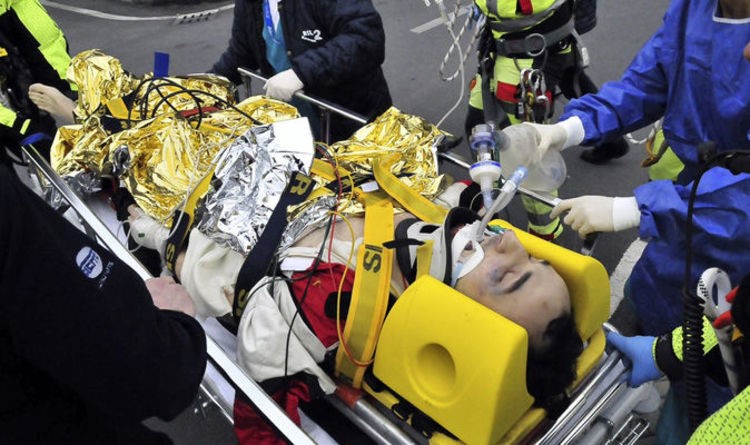
This promising future was devastated in moments after a crash in his Skoda Fabia in February 2011 during the first stage of the Ronde di Andora rally, in which he was competing largely for fun. The injuries he sustained were so severe they were expected to end his career. He endured emergency surgery – including a partial amputation of his right forearm – and suffered compound fractures and a significant loss of blood.
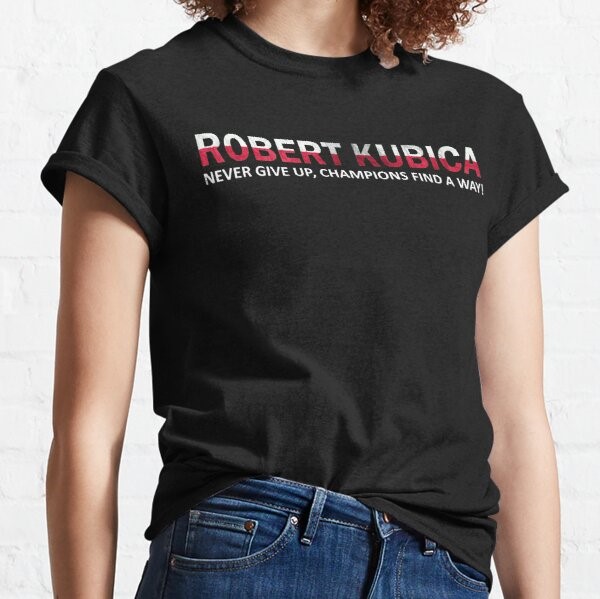
Repeated surgery followed and in 2013 Kubica said his dream of a return to F1 was “nearly impossible”. Yet merely accepting this fate without a fight was never an option. “You gain nothing from giving up,” he says. “I knew it would not fix my problems. You have to face reality, you have to adapt and try to move forward. It’s simple, you don’t gain anything by giving up.”
The immediate aftermath had been a low point. “The period straight after the accident was probably most difficult physically,” he says and when his recovery was under way he had to learn to adapt and overcome. He describes it as a process of learning about his body and its new limitations. He shook hands for a long time with his left and had to adapt to write with it as well. But ultimately these were minor challenges.
“You live in a different situation, so in the end there is a kind of switch and you change your mind, you have to learn and you want to learn,” he says. “I discovered how powerful the brain can be. The brain adapts very quickly. It is incredible how quickly we can adapt and what progress we can make in a very short time.”
This ability to adjust to a new way of life proved to be one of his greatest assets in the real struggle as he fought what might have been debilitating setbacks during his recovery. “The period where you have to adapt mentally, this was even more difficult,” he says. “Physical things you can solve. But then many times after surgery to improve things, you discover you have not moved forwards but backwards. Dealing with that is a mental task. You have to be strong. I do not have an easy character, definitely and in those days this character helped me quite a lot.”
By 2013, his indomitable refusal to accept defeat was rewarded when he returned to rallying. By 2015, he made the decision to test himself by setting targets to see how far he could push his return to F1 racing.
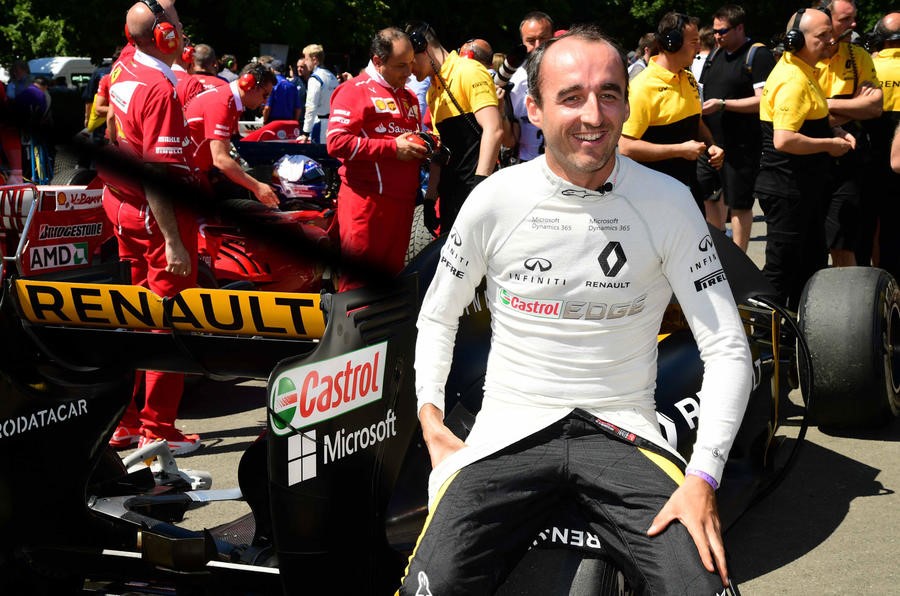
In 2017, he tested the 2012 Renault and it was revelatory. “I felt amazing in the car,” he says. “After a few laps, it felt so familiar to me. Those laps did not feel like it had been a six-year break. It felt like I had missed a couple of months. This opened up and unlocked my mind to see that maybe I can do it.”
Part of the pleasure in watching Kubica drive is his economy of style, the smoothness with which he handles the car and coerces the best from it with delicate precision. He admits that he has to drive “70%” left-handed, a feat that might be impossible for other racing drivers.
During rehabilitation, he worked at Formula Medicine in Tuscany with Dr. Riccardo Ceccarelli, a specialist in sports medicine who has worked with more than 70 F1 drivers. Ceccarelli has asserted that Kubica was almost unique in being able to come back from such severe injuries both mentally and physically. “Even if he’s in a difficult situation, he’s able to cut himself off from outside stress and allow the brain to focus on the driving,” said Ceccarelli. “This is why he consumes very low energy. This is why he’s the only driver able to drive an F1 car with a physical limitation that he has. It’s because he’s so natural in driving, so economic, he can positively compensate.”
Williams will have enjoyed the publicity his comeback has brought especially when last season proved to be the worst they have endured, finishing in last place, but the deputy team principal, Claire Williams, has been adamant Kubica earned his seat on merit. “Every report I had was: ‘he is eminently capable of driving an F1 car,’” she said. “We wouldn’t have given him the race seat if we didn’t feel we could. From a fitness perspective, I think you would struggle to find a fitter racing driver.”
When the new season gets under way Mercedes and Ferrari will once again be at the sharp end fighting for the title, with the Scuderia appearing to have the advantage after pre-season testing. Kubica and Williams, however, face an equally demanding task but at the other end of the grid. Williams missed two and a half days of testing when their car was not ready and when it did run it was off the pace. The team’s technical director, Paddy Lowe, was held responsible and last week he took a leave of absence for what the team called personal reasons, expected to be the precursor to his leaving officially. Kubica has missed what he needs most, which is time behind the wheel. It is not the start he would have wanted but he knows this was never going to be easy.
We shake hands, the almost tentative tenderness of his grip impossible to ignore and reinforcing the sense that whatever happens in Melbourne it will be the culmination of an astonishing achievement. But what really endures is the conviction in the final words that sum up the strength that brought him here. “When my drive with Williams was announced people said: ‘Congratulations, the hard job is done,’” he says. “I said: ‘no. The hard job is just starting.’”
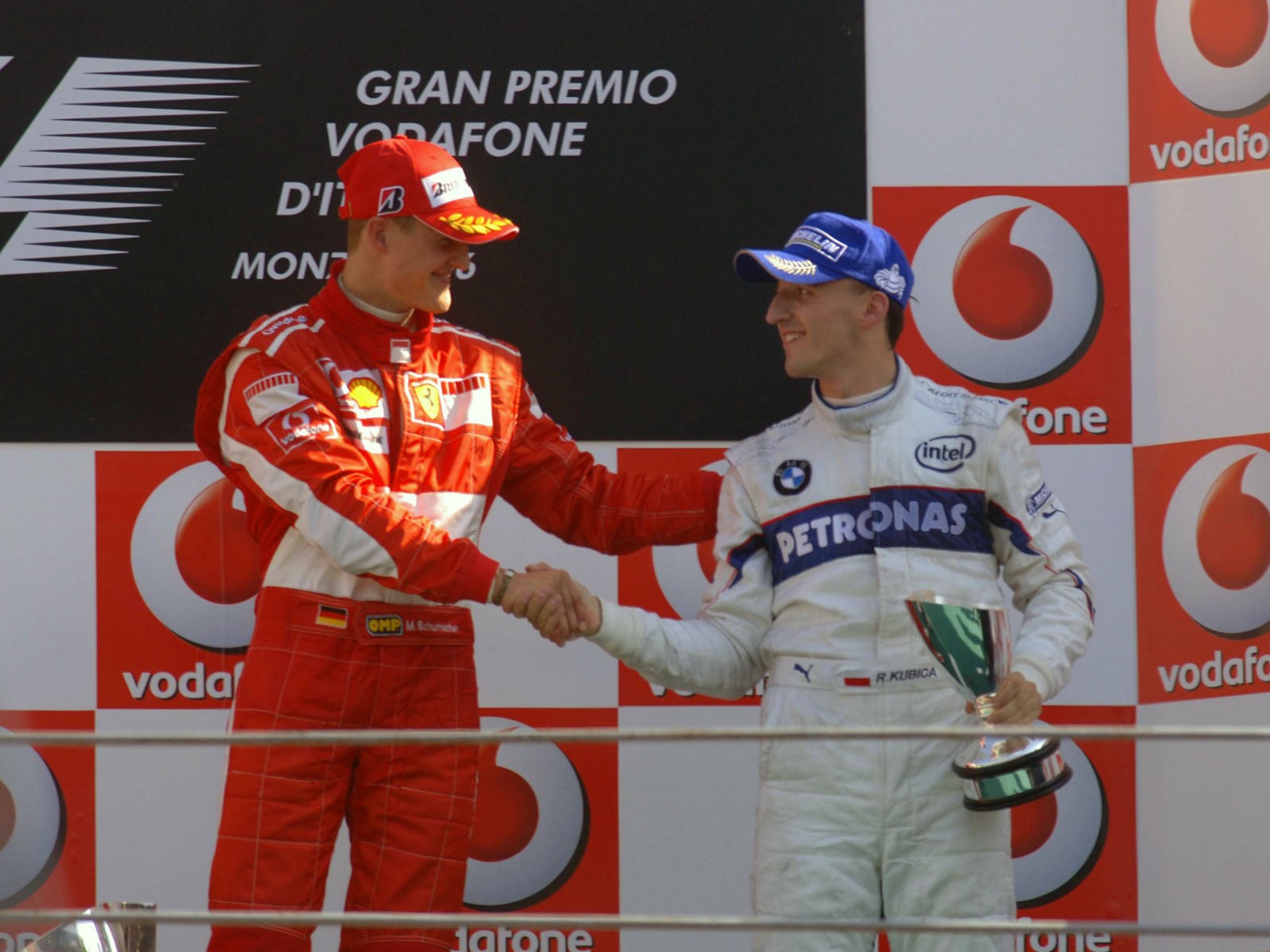
Robert Kubica’s 1st-podium in 2006 at Italian F1 GP.
Robert Kubica on 2011 deal with Ferrari: “everything was done, then I suffered the accident”.
Robert Kubica admits he was “surprised” when Scuderia Ferrari decided to sign up Carlos Sainz as a replacement for Sebastian Vettel next year.
“If the relationship was not good and not getting better, then it’s better to make a decision,” the Polish driver told Corriere della Sera – “I was a little surprised but I do not think the decision was taken recently. Ferrari always has precise plans and money has nothing to do with them,” Kubica added.
Indeed, it is believed that Robert Kubica, now 35, was heading to the Italian side for the future when he suffered his permanent arm injuries in a 2011 rallying crash.
“I had it done with them,” Kubica admits, before joking: “now I even avoid buying red cars.”
As for Ferrari’s latest decision, he said: “Sainz is a bold choice. He has never driven at the front and that could be a problem when they are chasing big results. Bottas or Ricciardo would have been safer options.” – he explained.
Finally, Kubica said his return to Formula 1 with Williams last year may have had a different outcome if Bernie Ecclestone had still been in charge of F1.
“Eight years of absence is a lot,” he said. “Many drivers, even many journalists did not even know me and even those who manage the sport have not done it all their lives. If Ecclestone had been there, things would probably have been different,” he concluded.
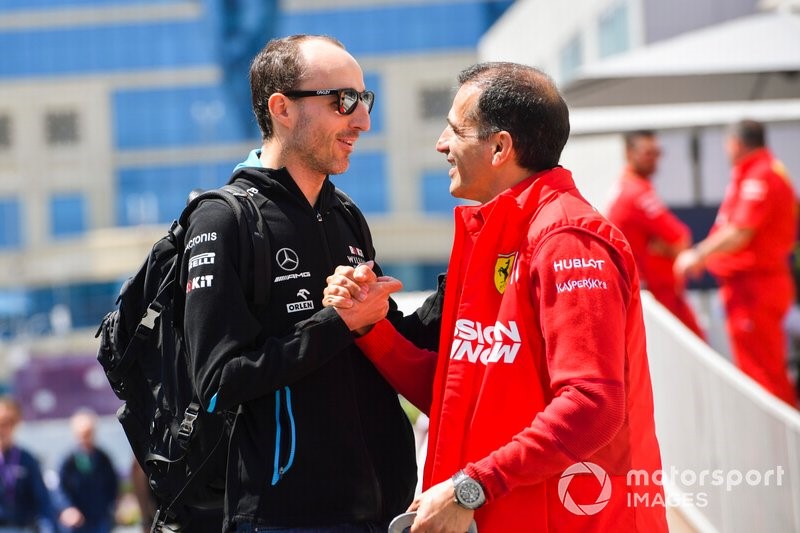
Robert Kubica on 2011 deal with Ferrari: “everything was done, then my I suffered the accident.”
Robert Kubica, who fought back from injury, is leaving F1. The New York Times. November 27, 2019. By Ian Parkes.
He landed a seat with Williams after his 2011 accident, but had little success with the team.
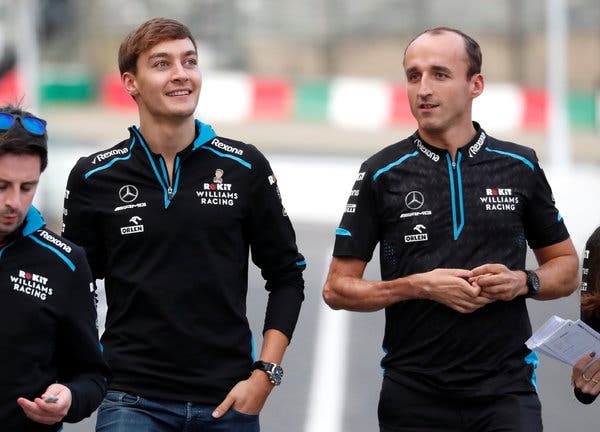
Robert Kubica and George Russell, who drive for Williams, have consistently qualified at the back of the grid this year. Credit: Issei Kato/Reuters.
It has not been the fairy-tale return to Formula One that Robert Kubica had hoped for.
“A few years ago no one would have put one euro on my comeback,” he said in an interview early this month.
Kubica drove in Formula One from 2006 to 2010. While competing in the Ronde di Andora rally in 2011, he sustained compound fractures to his right elbow, shoulder and leg and his right forearm was partly severed when his car was impaled on a guardrail.
“I’ve had to rebuild my life from zero,” he said in March as he prepared to return to Formula One with Williams. He will drive for the final time on Sunday in the Abu Dhabi Grand Prix. In September he said he would not remain with the team in 2020.
“It has been a complicated year,” said Kubica. “But there are many positives, which will remain in my brain, my memory, things which you probably haven’t seen because, as race drivers, it is all about results.
“To me, these things are probably even more important than simple results.”
Williams struggled on the track this season as its cars failed to perform. The team has scored one point, when Kubica placed 10th in the German Grand Prix in July.
“You have to be disappointed,” Kubica, 34, said. “If you are not, you are not living the reality, or, at least, you don’t have goals which are high enough.”
“Nobody at Williams, working at the racetrack and in the factory and also myself, are happy about our season. It is not the season we all were hoping for. It’s not the season I was hoping for.”
Williams missed the first two days of preseason testing because of delays in the build of the car. The difficult season has continued, with Kubica and his teammate, George Russell of England, consistently qualifying at the back of the grid.
Kubica, whose right forearm has atrophied, has shown he can drive at the highest level.
“When I speak of the positives from this season, there was a lot of talk, a lot of questions or remarks about my physical aspect, about my limitations,” Kubica said.
“I think those have completely disappeared. This is an achievement for me because people were looking at my situation, judging, putting doubts on me. But no one mentions my limitations anymore.”
Kubica’s prowess at working with the engineers to help develop a car was one reason Williams promoted him to a race seat after he worked as reserve driver in 2018.
This year, he has been out-qualified by Russell at all 20 races.
“I’m really pleased Williams gave him the opportunity to come back because he had fought hard for many years after his accident to be able to do that,” said Claire Williams, deputy team principal, in an interview.
“I’m sure it has been a frustrating journey this year because he hasn’t had the car, but he did know the circumstances he was coming into at the start and he has tried his hardest in order to help develop the team.”
“He has struggled as well. I think he would probably be honest and admit that, that it hasn’t been the return he would have liked either.”
Kubica has not announced what he will do next. He would prefer to race rather than be a development driver with another team.
If he does race, it will be in another series because there are no seats available in Formula One.
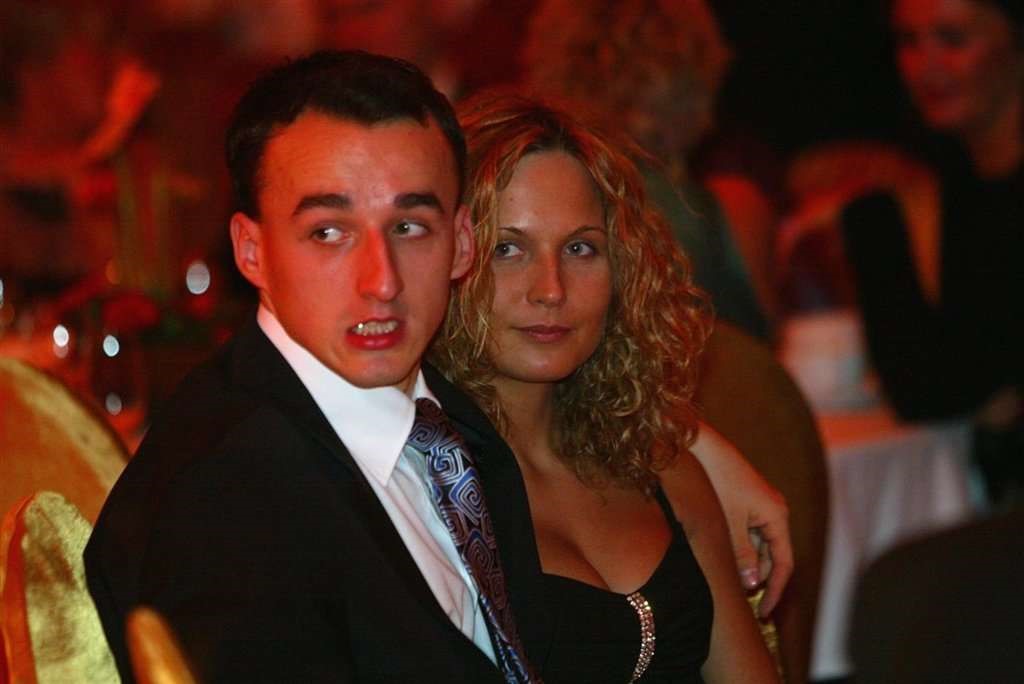
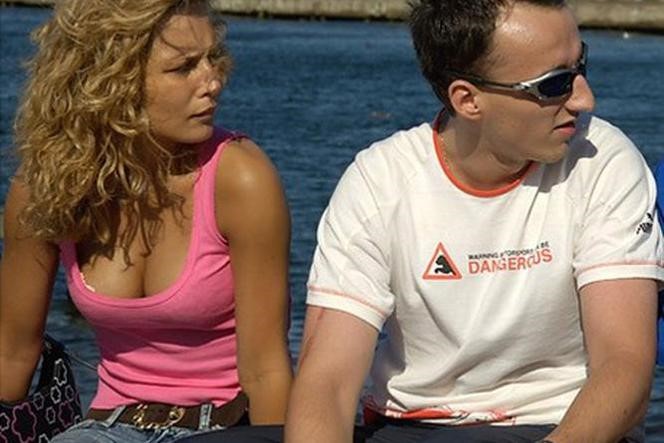
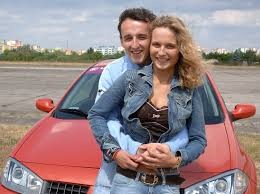
Robert Kubica with his Polish friend Edyta Witas.
Robert Józef Kubica became the first and, as of 2020, only Polish driver to compete in Formula One. Between 2006 and 2009 he drove for the BMW Sauber F1 team, promoted from test driver to race driver during 2006.
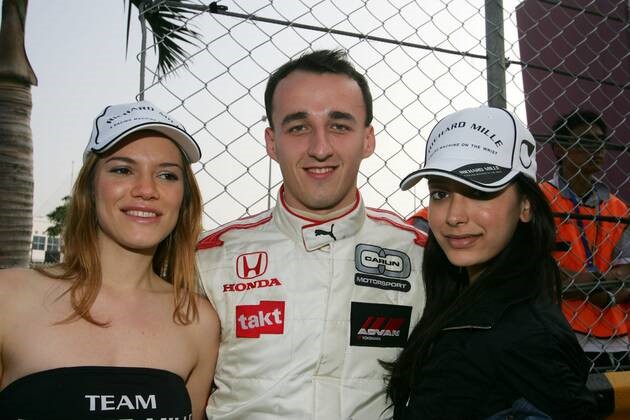
In June 2008, Kubica took his maiden Formula One victory in the Canadian Grand Prix, becoming the first Polish driver to win a Formula One race.
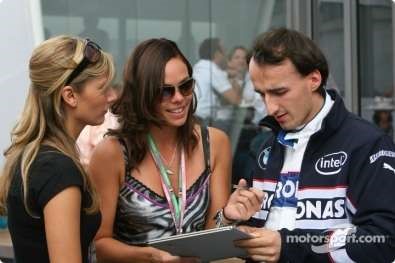
That season he led the championship at one stage, before finishing fourth overall, his best career position. Kubica drove for Renault in 2010 and was set to remain with the team in 2011. Several years later the Polish confirmed he had signed a pre-contract for the 2012 season with Ferrari, a move that was eventually cancelled by his devastating rally crash in the winter of 2011.
On 6 February 2011, Kubica was seriously injured in a crash at the Ronde di Andora rally, in which his right forearm was partially severed. He was taking part to better his skills. Kubica told Italian newspaper La Gazzetta dello Sport in a bedside interview that he could feel the fingers in his right hand and was determined to make a swift return to Formula One in 2011. Since his return to good health, however, he initially stated that a return to Formula One would be "nearly impossible" because of his injury. Since then, he took part in tests with Renault and Williams, admitting that a Formula One return in the near future was not impossible.
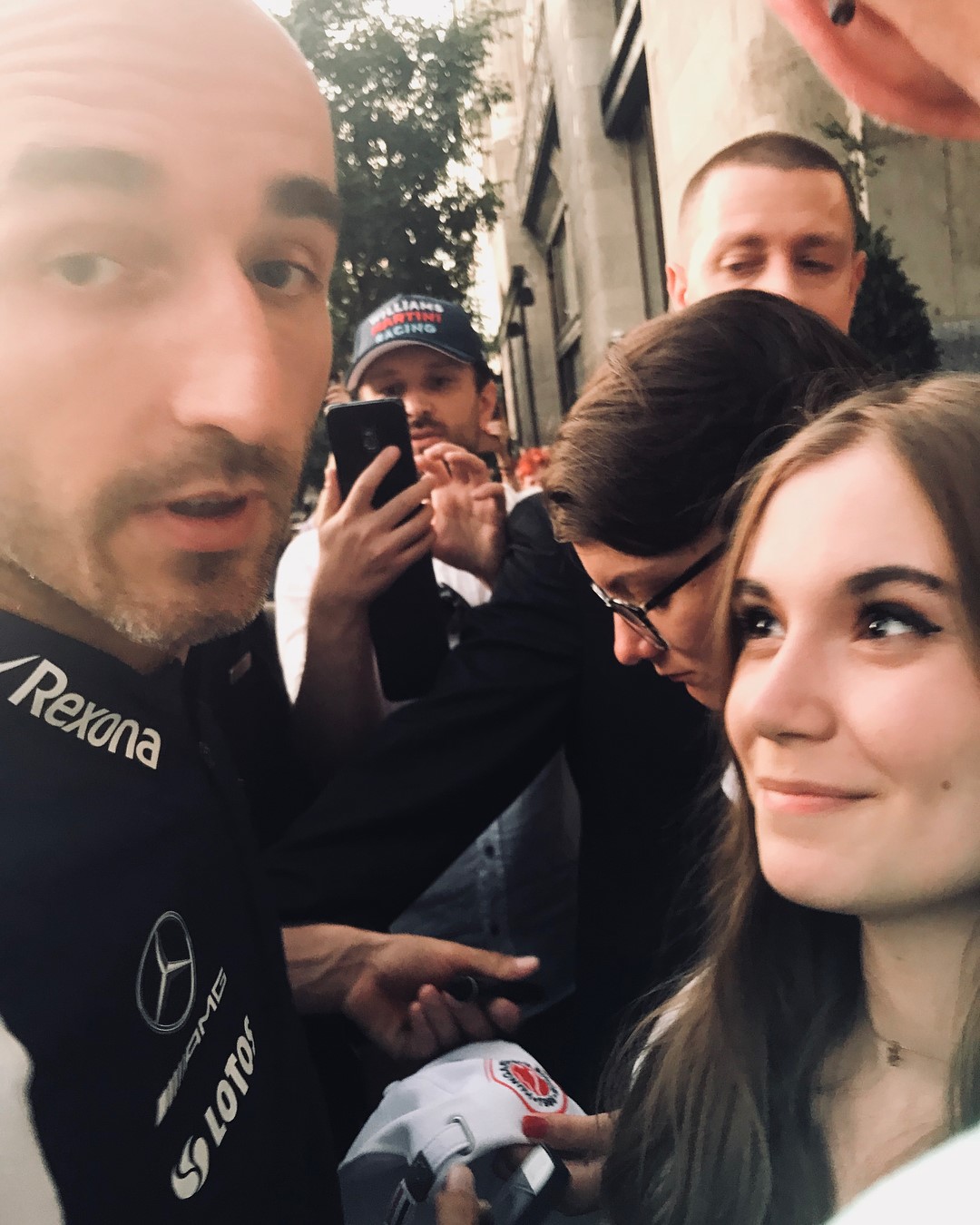
Girl' mirin Robert Kubica.
Kubica returned to racing in September 2012, winning a minor rally in Italy. Kubica was named one of "The Men of the Year 2012" by Top Gear magazine for his return to auto racing. In 2013, he drove for Citroën in the European and World Rally-2 Championships. He went on to win the inaugural WRC-2 title and moved to the WRC championship full-time in 2014, driving a Ford Fiesta RS WRC prepared by M-Sport.
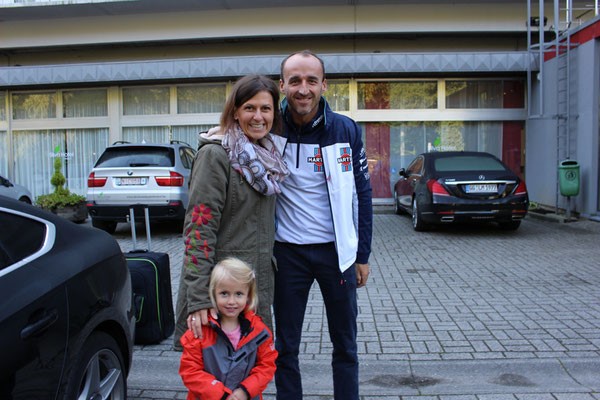
On 16 January 2018, it was announced that Kubica would become the reserve driver of Williams for the 2018 season. On 22 November 2018, Kubica was announced as a Williams race driver for the 2019 Formula One season. He left the Williams team at the end of 2019, moving across to the Deutsche Tourenwagen Masters while maintaining a Formula One presence as reserve driver for Alfa Romeo.
Kubica developed his love for all kinds of cars at the young age of four when he spotted a small off-road vehicle, powered by a 4 bhp (3.0 kW) petrol engine.
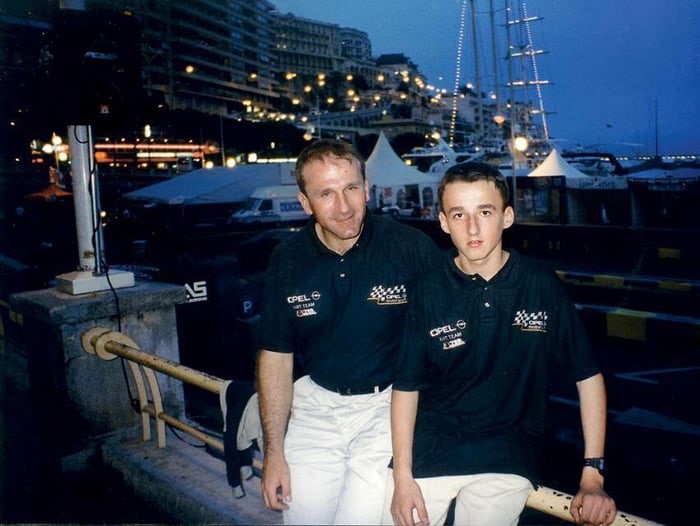
Robert with his father in Monaco.
After long talks with his parents, his father Artur bought him the car and young Kubica spent long hours driving around plastic bottles. When he got older it became apparent that he needed better equipment, so his father bought him a go-kart. However, Kubica was too young to start racing in the Polish Karting Championship as he was under the age of ten.
When he entered the championship, he won six titles in three years. After his third season, Kubica decided to switch to a more competitive series in Italy. In 1998 he became the first foreigner to win the International Italian Junior Karting Championship.
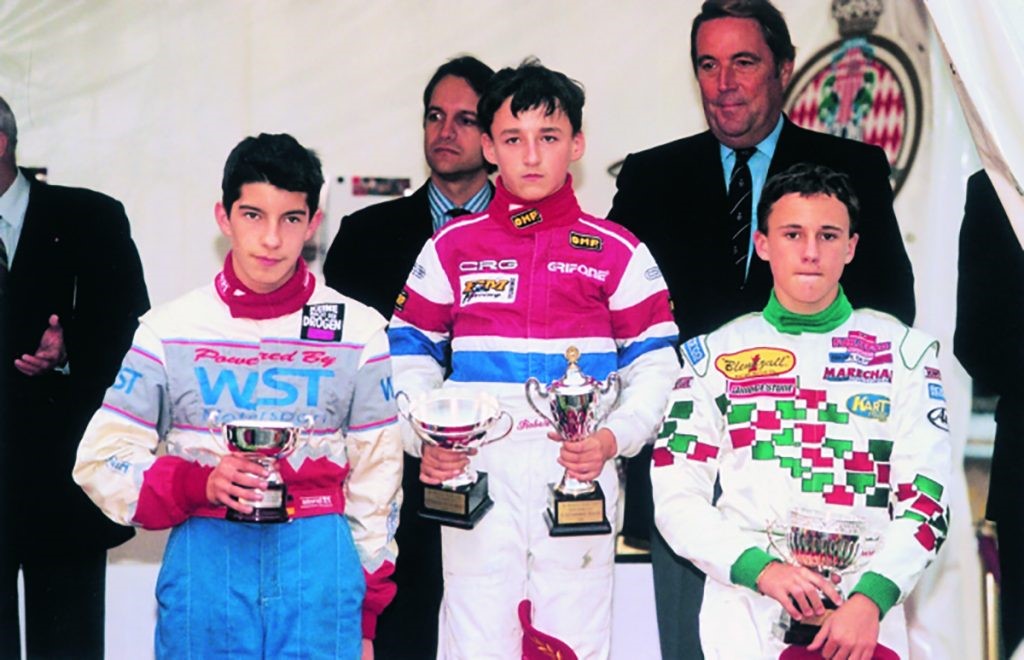
Robert Kubica in Monaco in 1998.
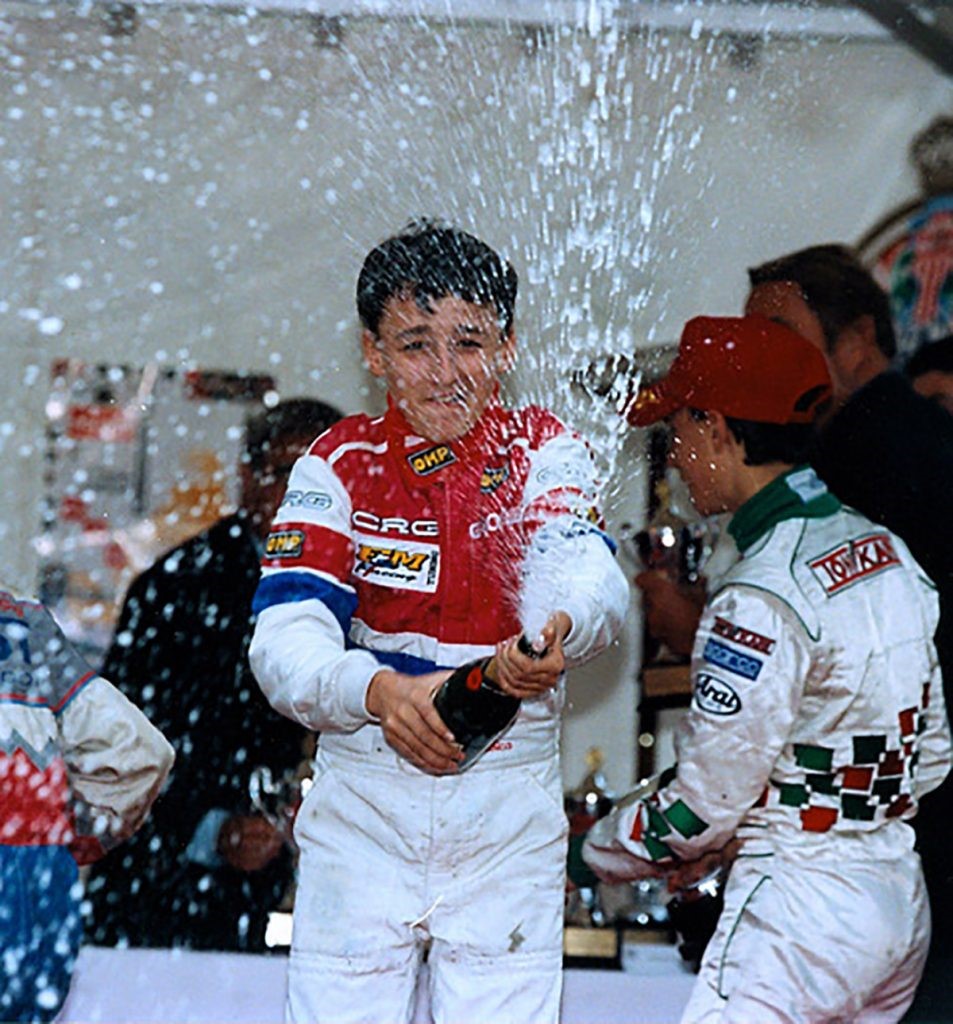
Robert Kubica in Monaco in 1998.
He also scored second place in the European Junior Karting Championship and won the Junior Monaco Kart Cup held on part of the Formula One Grand Prix track. A year later, he defended his title in Italy and also competed in the International German Karting Championship. He also won the Monaco Kart Cup for the second time in a row, as well as the Margutti Trophy and Elf Masters races. In 2000, his last season in karting, Kubica scored fourth places in both the European and World Championships.
Robert started his professional career in 2000, as a test driver for a Formula Renault 2000 car. During his first professional season in Formula Renault, Kubica scored his maiden pole position and also became a member of Renault's driver development programme. In 2002 he won four races and scored a second place in the Italian Formula Renault 2000. He was also seventh in the Formula Renault Eurocup. At the end of the year he took part in a Brazilian Formula Renault 2000 race held at the Interlagos circuit. This one-off appearance resulted in a dominant win.
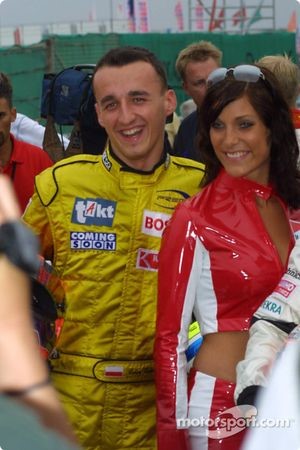
F3 Zandvoort masters 2003, Robert Kubica.
After Formula Renault, Kubica moved to the Formula 3 Euro Series. However, his move was delayed by a road accident which left him with a broken arm and titanium screws holding it together. At his delayed debut at Norisring, Kubica, driving with a plastic brace and 18 titanium bolts in his arm, won the race. He finished the season in 12th place. At the end of the year, he won a street race in Sardinia and came fifth in races held in Macau and Korea. He ended his second season in the Formula 3 Euro Series, spent with the factory Mercedes team, in 7th position. In November 2004, he scored pole position in the Macau F3 Grand Prix, where he broke the lap record, but finished second in the race.
In 2005 he won the World Series by Renault championship with the Epsilon Euskadi team, earning Formula One tests with Renault.
Formula One career.
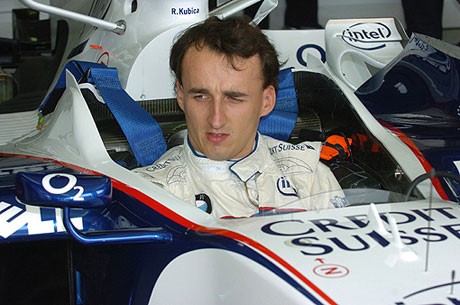
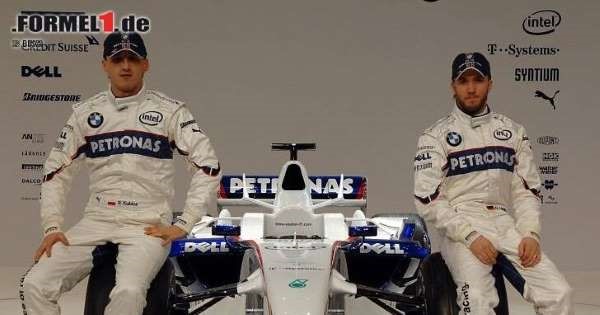
BMW Sauber
2006 season
In 2006, Kubica became the official reserve driver for the BMW Sauber Formula One team. His results in both Friday testing and private test sessions, along with the words of BMW Sauber team principal Mario Theissen, led to speculation that he would become Poland's first ever Formula One racing driver in 2007. In August 2006, Kubica's teammate, Jacques Villeneuve, complained about headaches after his accident during the German Grand Prix; he was deemed unfit to race by the team, against his own belief and Kubica was chosen by the team management to replace him at the Hungarian Grand Prix. Kubica qualified ninth, beating his more experienced teammate Nick Heidfeld. In the race, he finished in seventh place, but was disqualified after the race for having an underweight car. Villeneuve decided to leave the BMW Sauber team soon after the race and Kubica's position in the team for the remainder of the season was confirmed by BMW.
Kubica had a disappointing race at the Turkish Grand Prix, finishing in 12th place after a mistake in tyre choice. Heidfeld, who was delayed in a first-corner accident, placed behind Kubica.
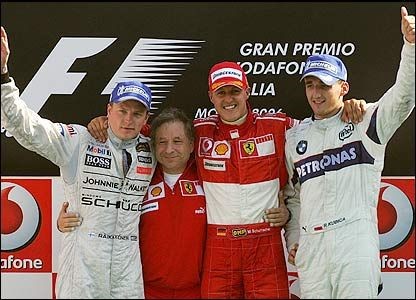
Ecstatic Ferrari fans cheer as Schumacher smiles alongside second-placed Raikkonen (left) and a delighted Kubica (right).
In his third race, the Italian Grand Prix, Kubica finished in third position.
In China, he finished 13th, again after a mistake in tyre choice. After going off track at the first turn of the race, he moved from 17th position to fifth, before pitting. He was the first to change from intermediate tyres to dry tyres after the wet track started to dry. This decision was made too early: a very slow next lap in extremely wet and slippery conditions and another pit stop to change back to intermediates cost him his place in the points.
Kubica performed well during the 2007 season, finishing consistently in point scoring positions.
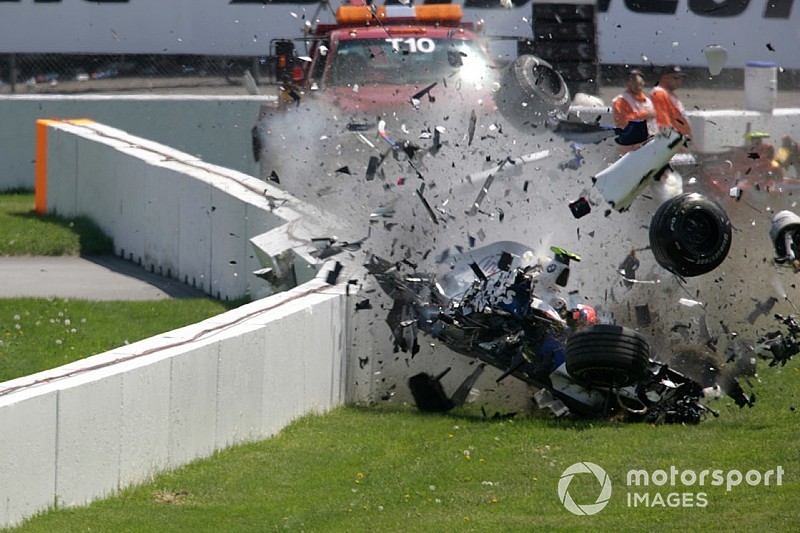
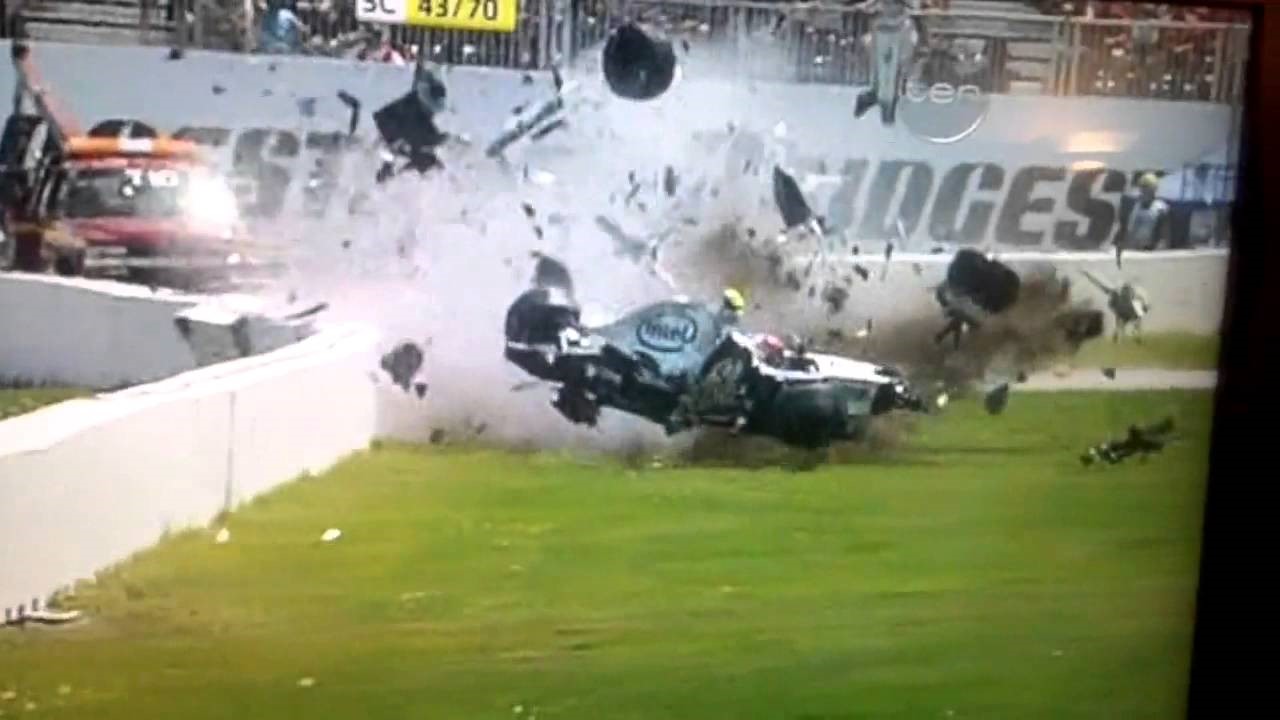
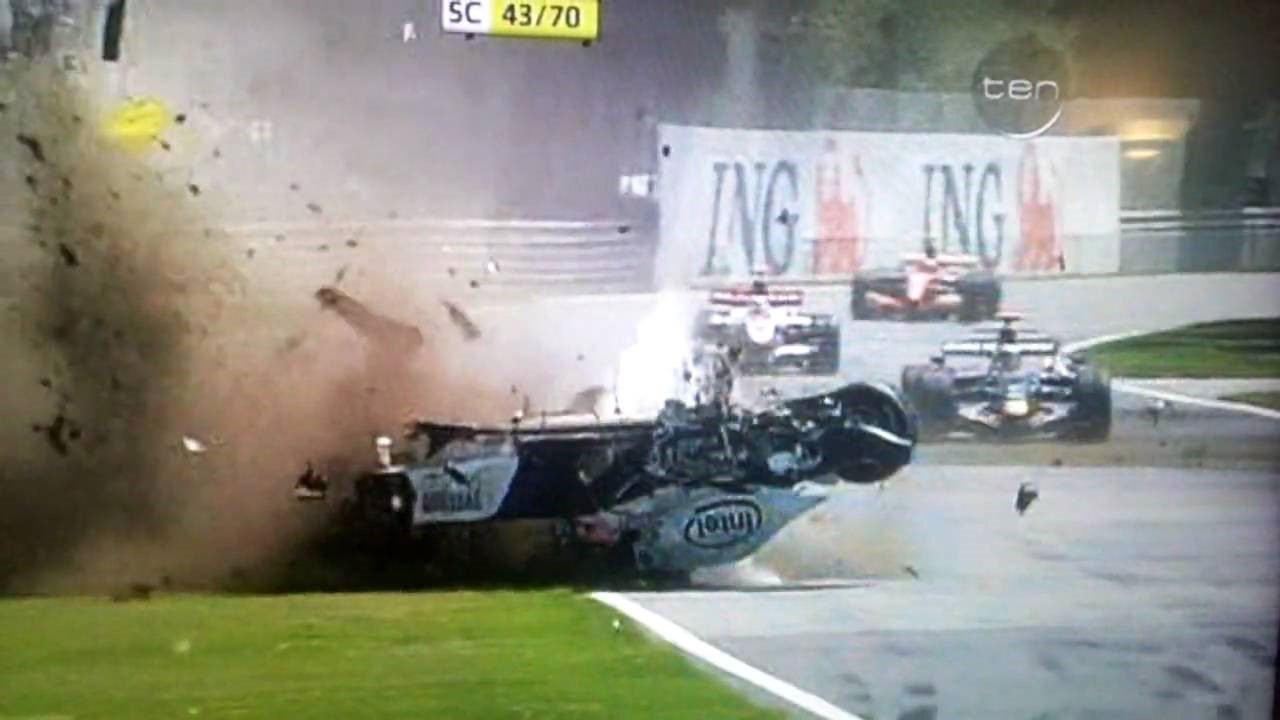
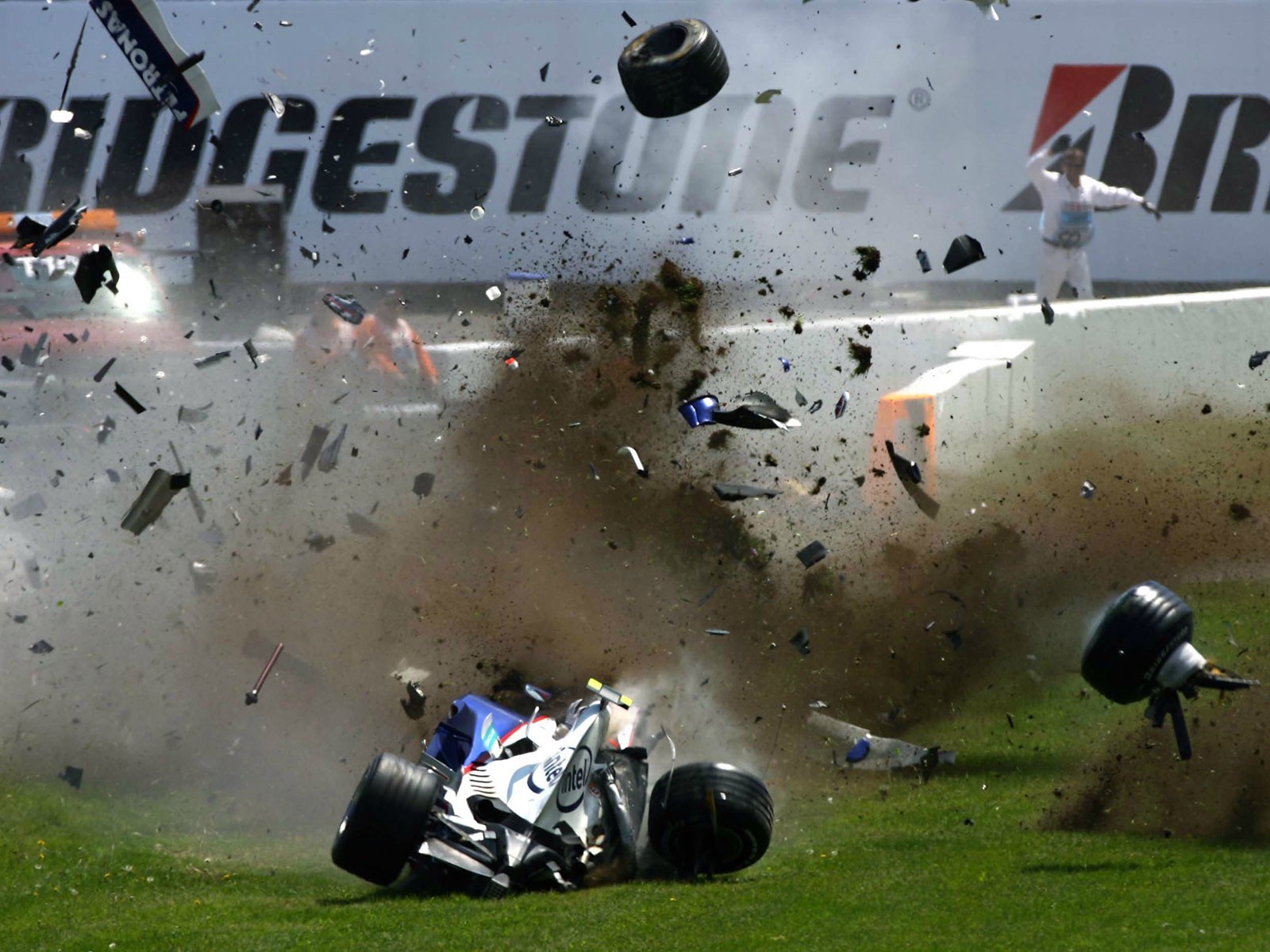
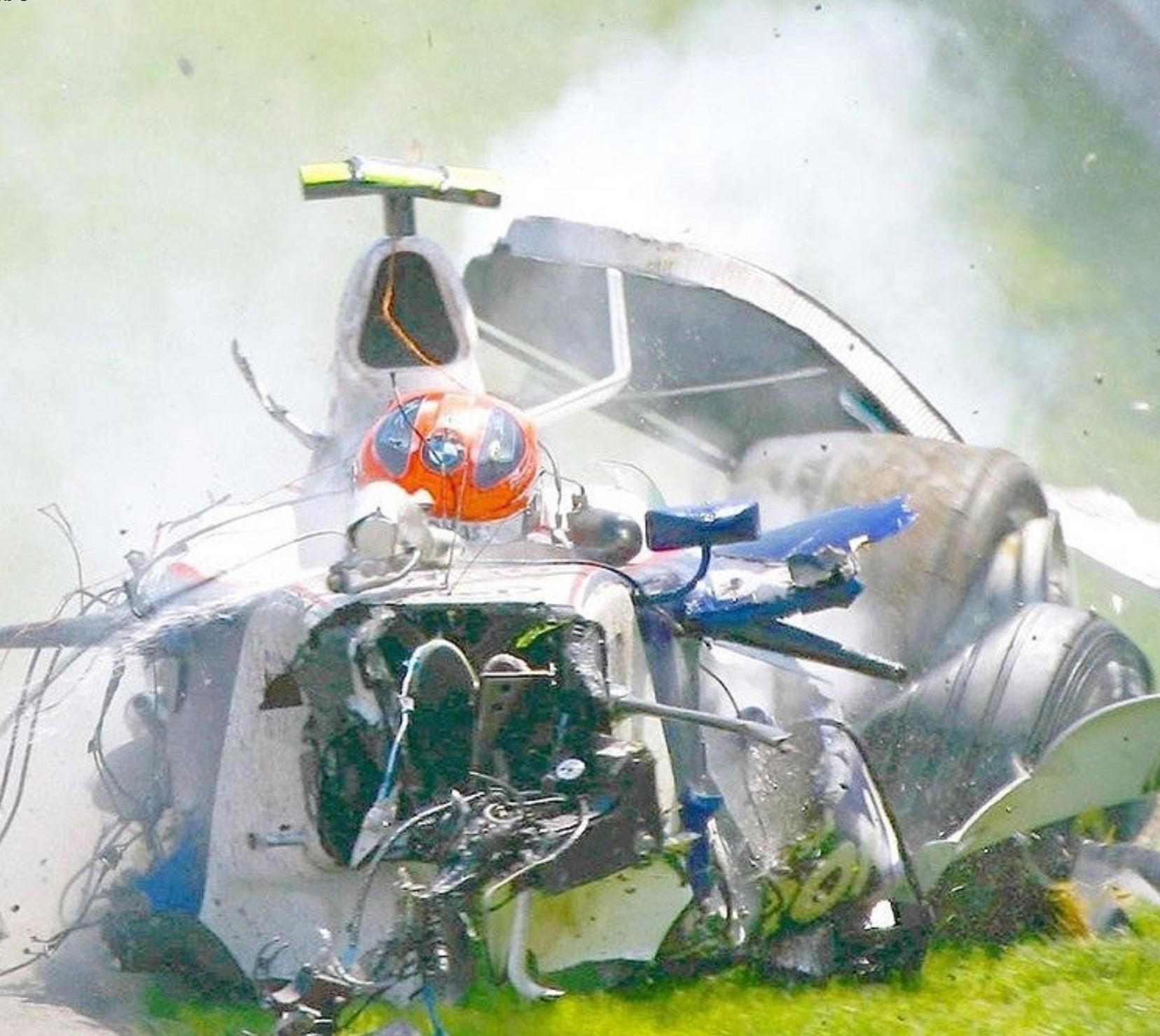
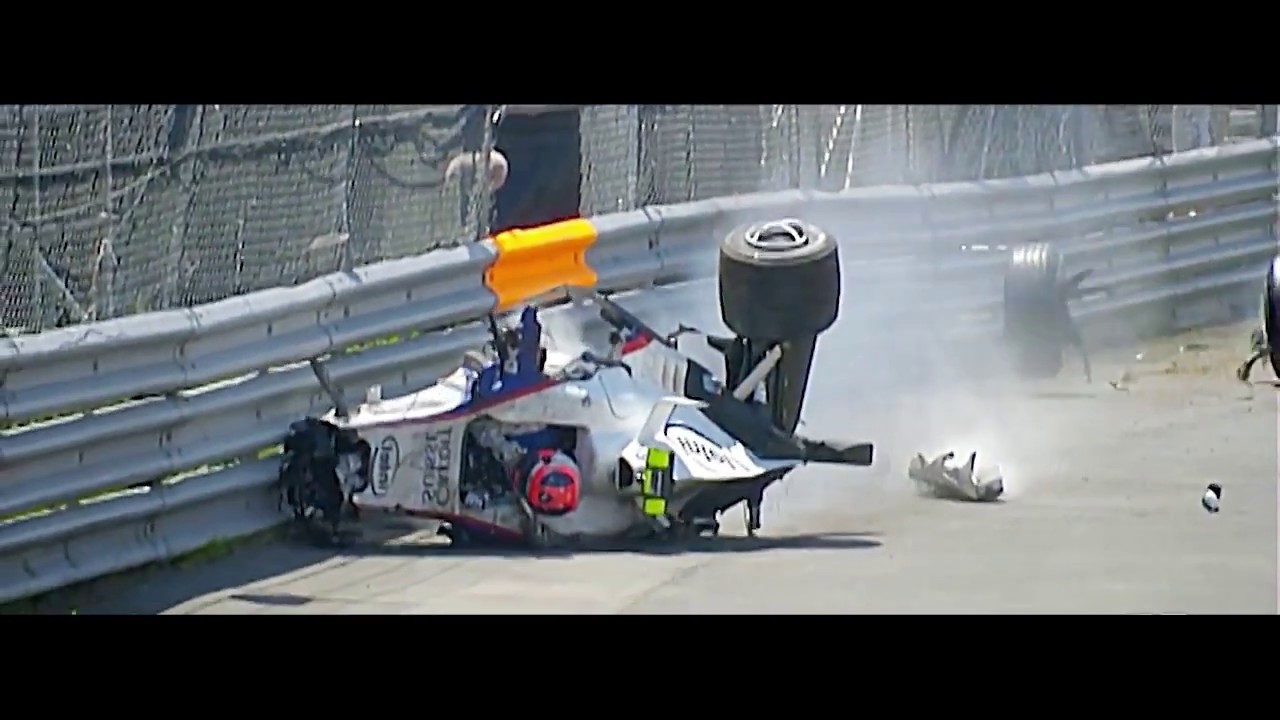
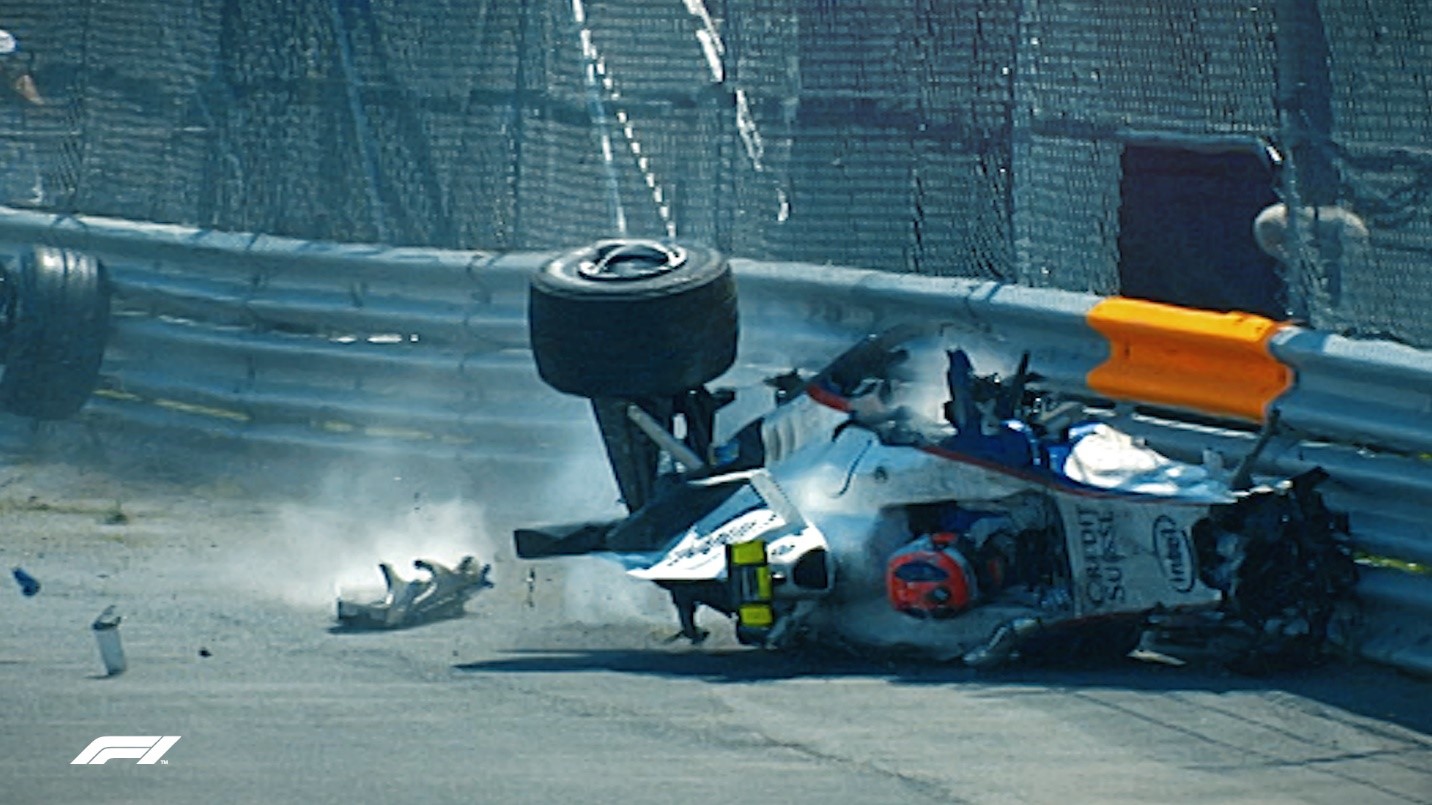
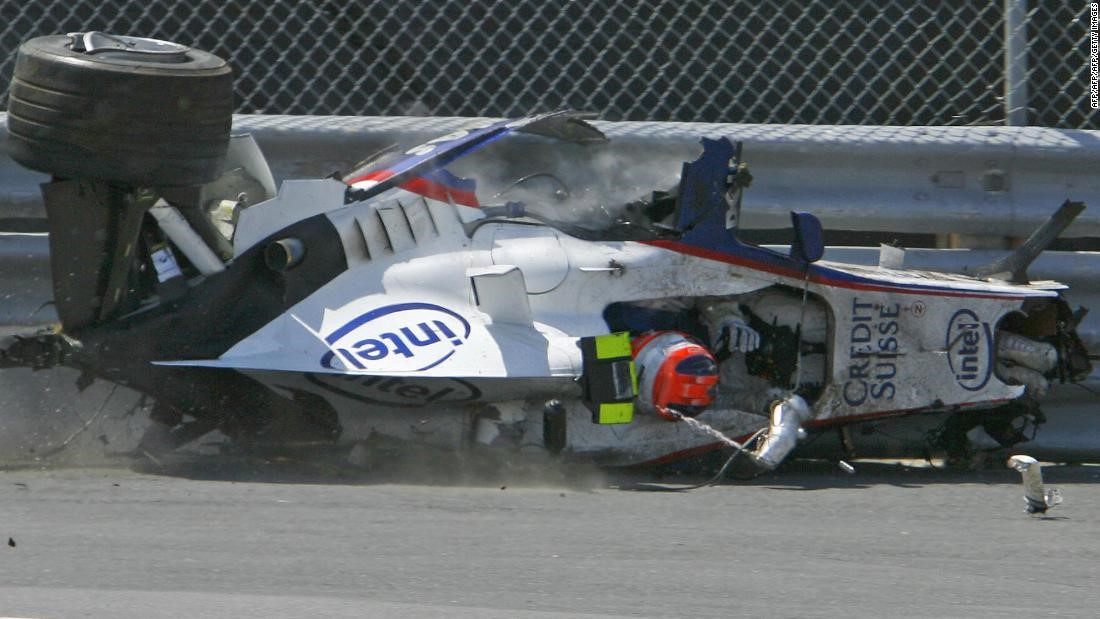
At the Canadian Grand Prix Kubica had a serious crash approaching the hairpin on lap 27, in which his car made contact with Jarno Trulli's Toyota and hit a hump in the grass which lifted the car's nose into the air and left him unable to brake or steer. The car then hit the concrete retaining wall and rolled as it came back across the track, striking the opposite wall on the outside of the hairpin and coming to rest on its side. The car was heavily damaged and Kubica's feet could be seen exposed through the destroyed nose of the car. The speed measured when his car clipped the barrier was 300.13 km/h (186.49 mph), at a 75-degree angle, subjecting Kubica to an average deceleration of 28 g. After data from the onboard accident data recorder had been analysed it was found that he had been subjected to a peak G-force of 75 G. Under safety car conditions, Kubica was removed from the car and taken to the circuit's medical centre, where he was announced to be in "stable" condition. Shortly afterwards, his manager Daniele Morelli said Kubica was conscious and talking. It was initially reported that Kubica could have a broken leg. However, Mario Theissen later confirmed that he was not seriously injured.
Further reports from late evening on race day, directly from the hospital, confirmed that Kubica had suffered a light concussion alongside a sprained ankle. After being kept in overnight for observation, he left hospital the following day. On 14 June it was announced that as a precaution, Kubica would not race at the United States Grand Prix and would be replaced by test driver Sebastian Vettel. After missing Indianapolis, he returned for the French Grand Prix where he qualified and finished in fourth place, receiving ITV broadcaster Martin Brundle's driver of the day award. He then went on to finish fourth again at the British Grand Prix.
2008 season
Kubica's retention as race driver for 2008 was confirmed on 21 August 2007.
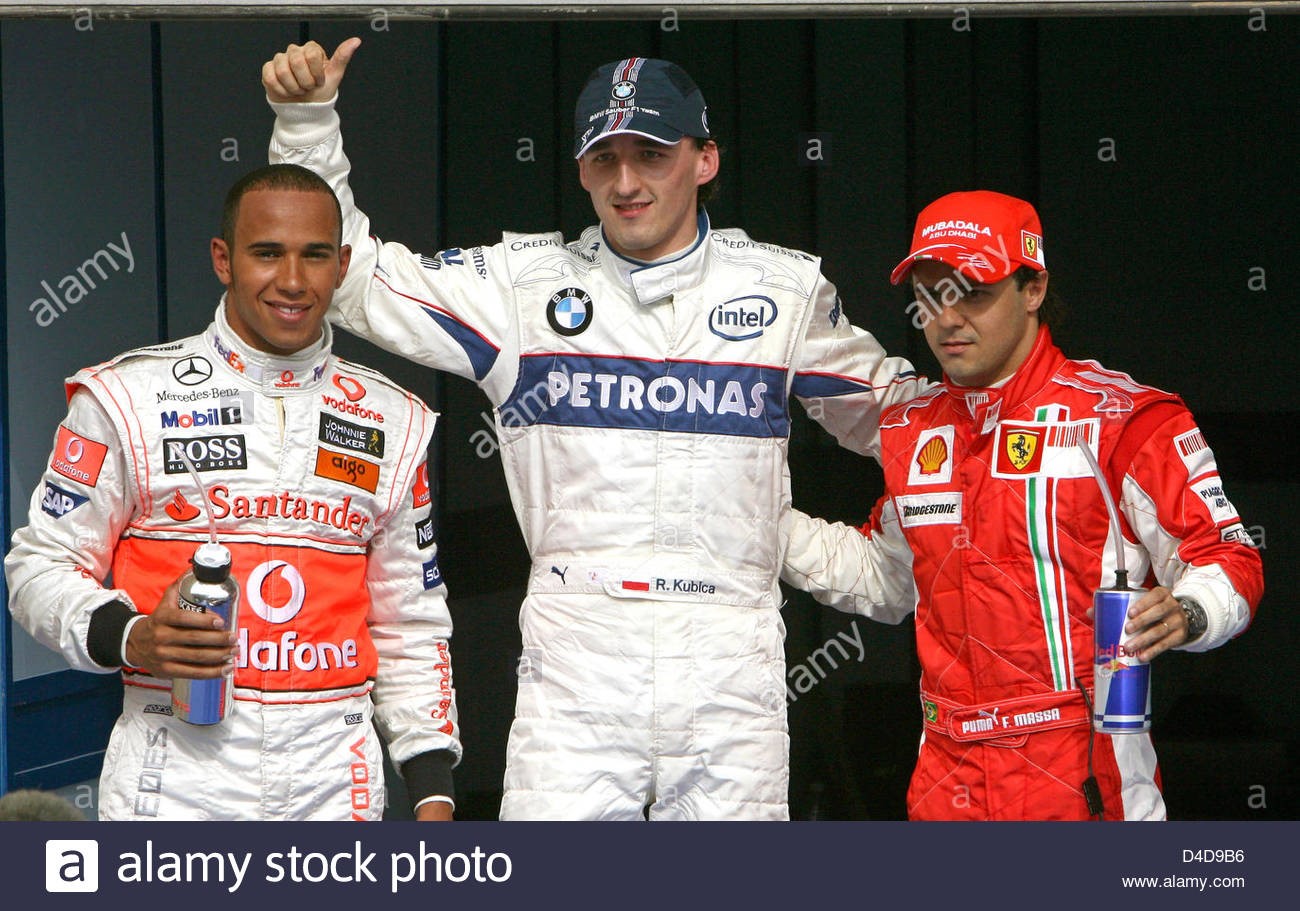
Robert Kubica of BMW Sauber, Lewis Hamilton of McLaren Mercedes and Felipe Massa of Ferrari celebrate after the qualifying session at Sakhir Circuit near Manama, Bahrain, 05 April 2008.
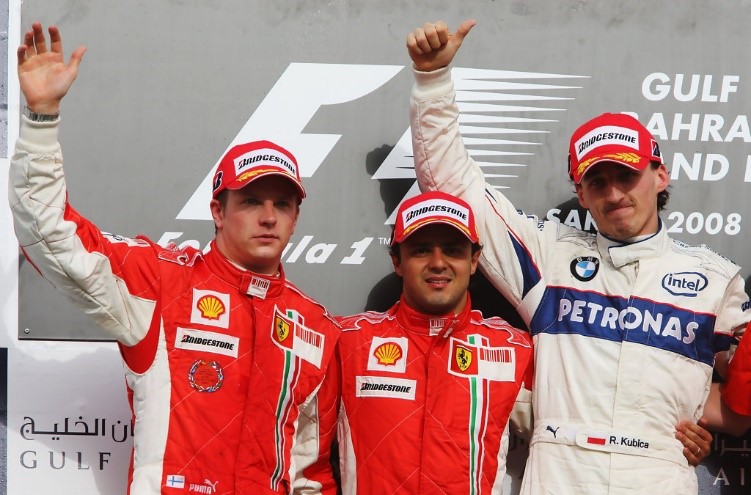
Second placed Kimi Raikkonen, Ferrari race winner Felipe Massa and third placed Robert Kubica celebrate on the podium after winning the Bahrain F1 Grand Prix at the Bahrain International Circuit on April 6, 2008 in Sakhir.
Over the first half of the season, he qualified and finished strongly, including his and BMW Sauber's first pole position at the Bahrain Grand Prix and second-place finishes at the Malaysian and Monaco Grands Prix.
On 8 June 2008 at the Canadian Grand Prix, Kubica achieved his first Formula 1 victory. He started second on the grid and passed race leader Lewis Hamilton in the first round of pitstops after the BMW Sauber pit crew completed a faster pitstop.
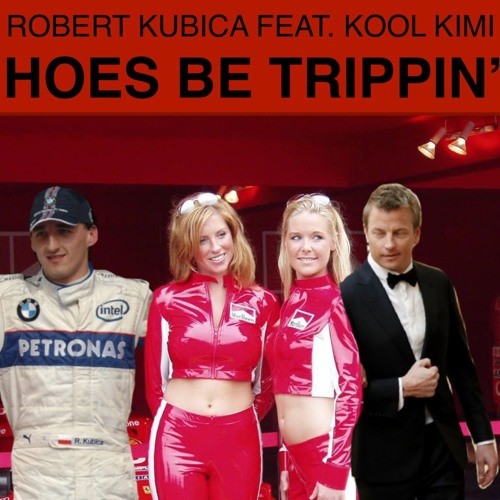
Robert Kubica - Hoes Trippin' Feat. Kool Kimi.
On leaving the pits, Kubica and Kimi Räikkönen's Ferrari halted at the pit lane exit, waiting for the red pit exit light to change. Hamilton, running immediately behind them, missed the light and crashed into Räikkönen's Ferrari, eliminating both cars from the race. Kubica rejoined the race well positioned for the eventual victory. He passed Heidfeld's sister BMW Sauber, running one refuelling stop to Kubica's two stop strategy and gained the necessary 24 seconds over Heidfeld to ensure that he maintained the lead after his second stop 22 laps later. The BMW Saubers remained first and second to the end of the race. Kubica later joked that he should thank Hamilton for electing to crash into Räikkönen instead of him. The win gave Kubica the lead in the Drivers' Championship.
BMW Sauber's results were weaker over the second half of the season. At the French Grand Prix at Magny-Cours, Kubica finished 5th, reporting that this was a lost race, complaining about aerodynamic problems with the car. Kubica's strongest result of the latter part of the year was in Japan where he qualified sixth. At the start, several drivers braked too late for the first corner. Kubica took an inside line overtaking several cars and emerged in the lead. He led for 16 laps, but lost his lead to Fernando Alonso at the first round of pit stops. Kubica finished second after defending his position towards the end of the race against Räikkönen in a faster Ferrari (his fastest race lap was 0.6 seconds quicker than the Pole's). Apart from that, Kubica achieved podiums in a race in Valencia and in the rain affected race at Monza. Kubica finished the year fourth in the Drivers' Championship.
At the 2009 season opener in Melbourne, Kubica qualified fourth on the grid. During the race, he was in third place and closing the gap to the front two cars before making contact with Sebastian Vettel while trying to overtake him. After the incident, Kubica continued briefly, but crashed into a wall at the next corner because his front wing had become stuck under the car. Vettel was later deemed responsible for the accident and given a 10-place penalty on the grid for the next race in Malaysia.
BMW motorsport director Mario Theissen claimed that Kubica would have won the race ahead of Jenson Button had it not been for Vettel.
At the Malaysian Grand Prix, Kubica qualified in eighth place, but was promoted to sixth following Vettel's ten-place grid penalty for causing the crash in Australia and Rubens Barrichello's five-place grid drop for changing his gearbox. However, he retired very early in the race with engine problems. The next two races, the Chinese Grand Prix and the Bahrain Grand Prix were disappointing for the BMW Sauber team as both Kubica and his teammate Heidfeld finished outside the points with a non-competitive car.
For the next race in Barcelona, BMW Sauber prepared a modified version of the F1.09. The car proved more competitive but a mistake in fitting the tyres to Kubica's car during Q3 meant he could only qualify in 10th position. In the race, after a bad start (due to a clutch issue) he finished once more out of the points.
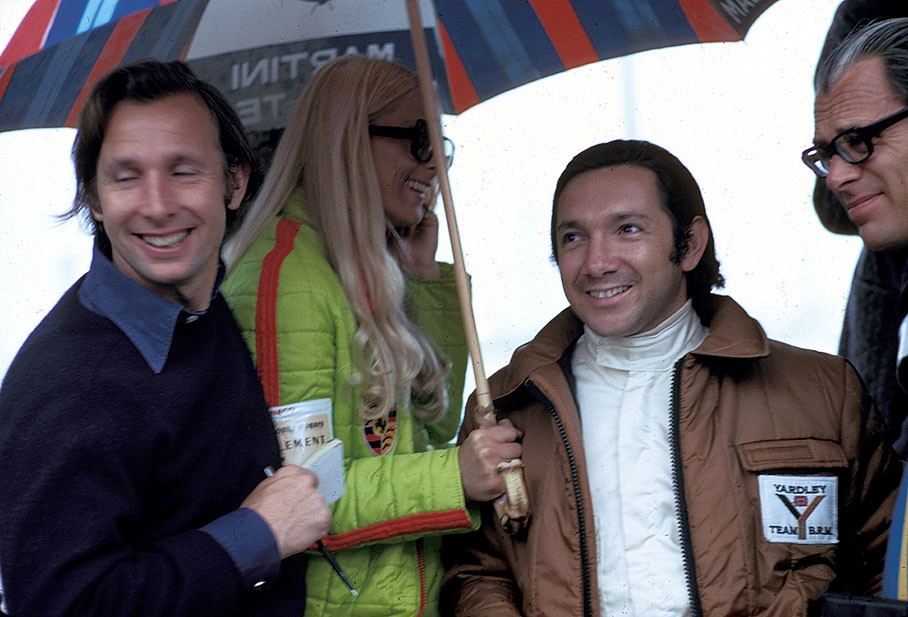
Montecarlo 1971.
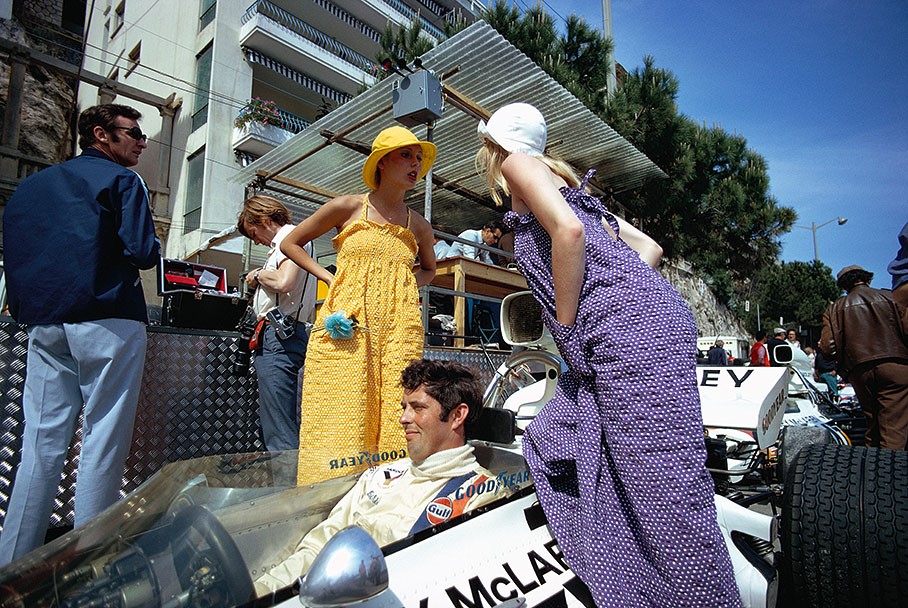
Montecarlo 1972.
Kubica suffered from an engine failure during second practice in Monaco and retired from the Grand Prix due to a brake issue. At the Turkish Grand Prix, the team introduced the double diffuser. The car's performance improved and Kubica managed to score his first points of the season with a 7th place. In the next 3 races both BMW Sauber drivers finished outside the points again, but during the European and Belgian Grands Prix again proved to be competitive, scoring 8th and 4th positions respectively. In Italy, Kubica suffered engine trouble in qualifying and then retired from the race due to an oil leak. At the Singapore Grand Prix, he finished 8th, defending his position from Kazuki Nakajima and Räikkönen in the last laps. He later stated it was "the most difficult point I have ever scored".
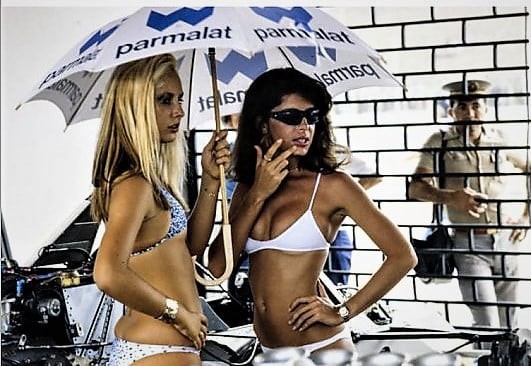
Vintage grid girls at Jacarepagua’ in Rio de Janeiro, Brasil, in 1981.
At the Brazilian Grand Prix, Kubica scored his first podium of the season despite engine temperature problems by finishing in 2nd place, 7.6 seconds behind winner Mark Webber. The podium was BMW's second of the season.
On 29 July 2009, BMW announced that they would leave Formula One at the end of 2009, which made Kubica a free agent for the 2010 season. For the 2010 season, it was announced that he had signed for Renault F1, the team he tested for during his junior career.
Renault
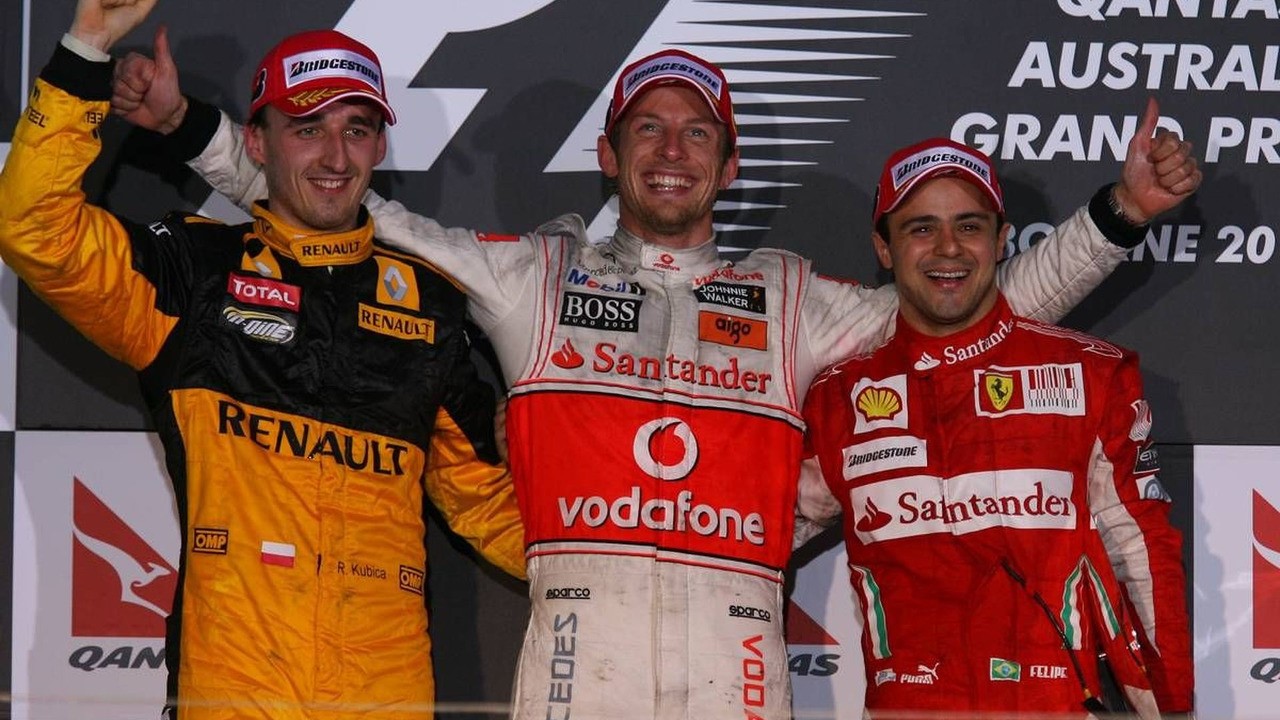
Australian GP 2010. 2nd place Robert Kubica with 1st-place Jenson Button and 3rd place Felipe Massa.
2010 season: moving to Renault
Kubica moved to the Renault team for 2010. His position was briefly put in doubt, however, by the team evaluating its future in the sport following the 2009 season in the wake of the "Crashgate" scandal and the parent company's financial problems. This resulted in a Luxembourg-based investment firm, Genii Capital, taking a 75% stake in the team; Renault retained the remaining 25%. Eric Boullier was also appointed as the new team manager. Kubica said he might not stay with Renault, as his contract was only valid if the parent company had a controlling stake in the team, but he then decided to remain with them. On 31 January 2010, it was announced that Vitaly Petrov was to be Kubica's teammate.
It was reported in Autosport that Ferrari driver Felipe Massa had until the 2010 British Grand Prix to prove to the Maranello outfit that he was worth hanging onto: if not, Kubica would take his seat in 2011. However, Ferrari re-signed Massa for 2011, leaving Kubica without a drive at the Italian team.
On 7 July 2010, it was confirmed that Kubica had extended his contract with Renault to 2012.
At the opening race of the 2010 season in Bahrain, Kubica was tagged by Adrian Sutil and spun on the opening lap but recovered to 11th. At the next race in Australia, he finished second after starting in ninth position. Fourth in Malaysia and fifth in China left him in seventh place in the Drivers' Championship, 20 points behind championship leader Jenson Button. Kubica felt that had there not been a second safety car period in China he could have finished on the podium. In Spain he finished eighth, but followed this up with another podium in Monaco, holding third throughout after losing second at the start to Sebastian Vettel. At the Turkish Grand Prix, he was held up behind Nico Rosberg for the second time in the season after Malaysia, and finished sixth.
In Canada, Kubica finished seventh after an eventful race and problems with tyre degradation which made his race difficult, but did set the first fastest lap of his career in the race's closing stages. He added a fifth in Valencia and seventh in Germany before taking his third podium of the season in Belgium. He was competitive throughout the weekend, qualifying third, and only a bungled pitstop cost him second to Mark Webber. In Singapore, he qualified eighth in front of Schumacher. During the late stages of the race, he was forced to pit from sixth place due to a puncture. He was released from the pits to twelfth place, but with the help from superior grip and a series of overtaking moves—his move against Sutil was favourably compared to the incident between Webber and Hamilton—was able to claim seventh place, ultimately gaining a place from his qualifying result. In Suzuka, he managed to trail the Red Bulls throughout the weekend and translated it into a strong third place in qualifying. However, despite getting a good start and overtaking Webber at the start of the race, but would retire during the safety car period after losing one of his rear tyres.
Formula One journalist Mark Hughes remarked that Kubica was currently "arguably the best driver", considering the season so far. He emphasised Kubica's strong showing in tracks where Hughes believed that the differences in driver skills are able to overwhelm the differences in the capability of the cars; namely, Monaco, Spa and Suzuka. Kubica managed to finish on the podium behind the Red Bulls except in Suzuka where he was strong throughout the weekend nevertheless, despite retiring from the race through no fault of his own.
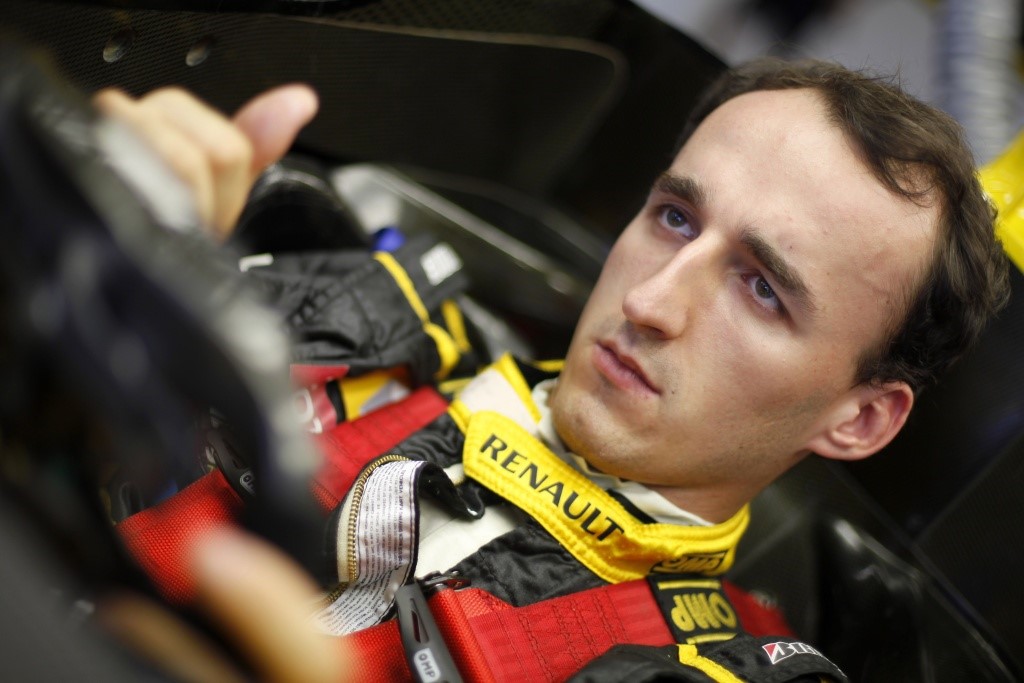
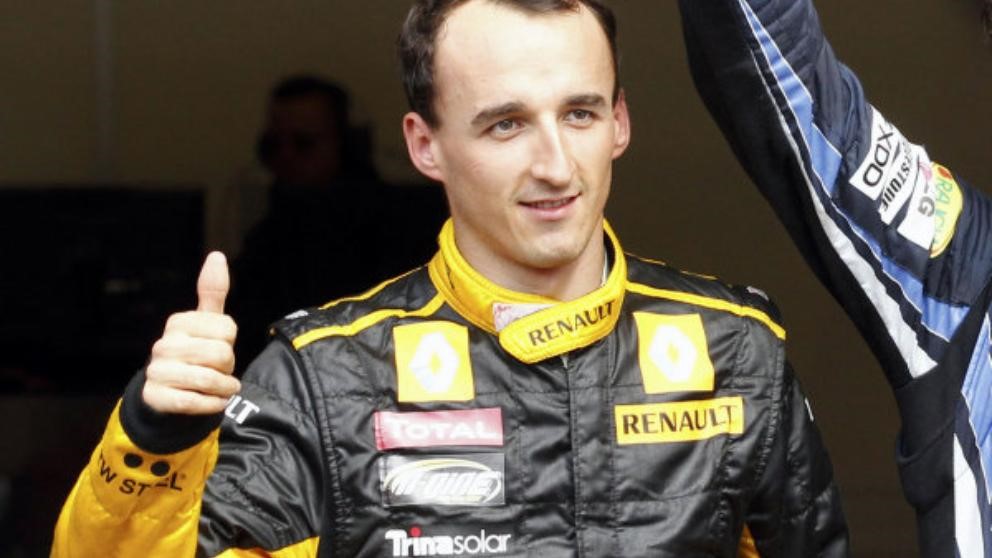
Robert Kubica in 2011.
2011 season: near-fatal crash ends year
Kubica was retained by Renault – rebranded as Lotus Renault GP through Lotus Cars sponsorship – into the 2011 season, again partnered with Petrov.
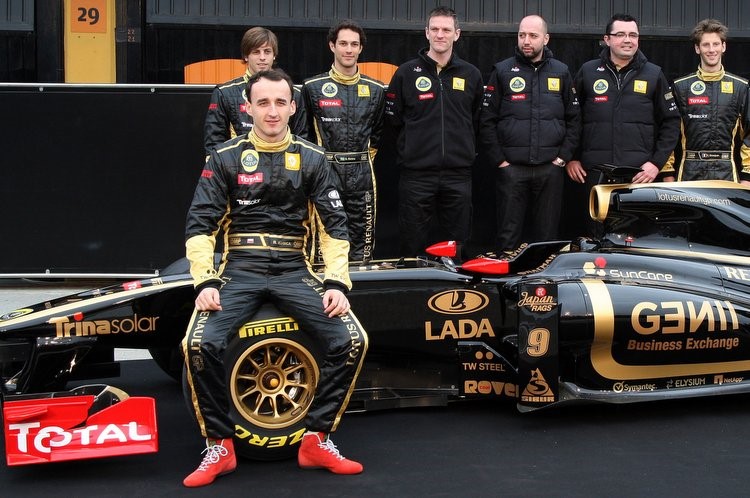
He tested the team's new car, the Renault R31, for the first time in Valencia on 2 February. On the last day of testing in Valencia he set the fastest time of the session.
On 6 February 2011, he was injured in a crash on the first stage of the Ronde di Andora rally. He was driving a Super 2000-specification Škoda Fabia in Testico when his car left the road at high speed and hit a crash barrier, near the church of San Sebastiano. Kubica was trapped in the car for more than an hour before rescue workers were able to extricate him. He was flown by helicopter to Santa Corona Hospital in Pietra Ligure near Savona, where it was confirmed that he had suffered partial amputation of his forearm, compound fractures to his right elbow, shoulder and leg, as well as significant loss of blood. The severity of his injuries was the result of the crash barrier penetrating the car's cockpit and hitting Kubica, while leaving his co-driver unscathed. Kubica underwent a seven-hour operation by seven doctors split into two teams, without complications. Two more lengthy operations to repair fractures to his leg, shoulder and arm were performed successfully a few days later. The condition of his hand was not clear for some time and as a result he missed the 2011 season. As he was unable to start the season, Lotus Renault signed his former BMW Sauber teammate Nick Heidfeld as his replacement on 16 February, while Kubica still remained signed with the team for the 2011 season. Bruno Senna replaced Heidfeld later in the season, at the Belgian Grand Prix. Kubica was released from hospital to begin his rehabilitation on 24 April 2011. In November 2011 it was announced that Kubica would not be ready for the beginning of the 2012 season, forcing Renault (who at which point had changed their name to Lotus) to begin the season with two other drivers, Kimi Räikkönen and Romain Grosjean.
After the accident
Return to motorsport
Rally racing
Kubica's recovery was dealt another setback after he re-broke his right leg, when he reportedly slipped on ice near his home in Italy, on 11 January 2012. He remained out of competitive racing for most of 2012, but returned to compete in the Ronde Gomitolo Di Lana in a WRC car on 9 September. He won the rally, finishing one minute ahead of the second placed driver.
In 2013, Kubica continued his return, focusing on rallying. He drove for Citroën in the European and World Rally-2 Championships. His first event was the Rally de Portugal, in which he was competitive, but crashed and issues with his car led to him finishing in 6th. Then, at the Acropolis Rally, Kubica won, finishing nearly 90 seconds ahead of second placed Yuriy Protasov. He repeated this success at the Rally d'Italia winning ahead of Abdulaziz Al-Kuwari by 4 minutes. At the 2013 Rally Finland Kubica lost to Jari Ketomaa by nearly 90 seconds. The Rallye Deutschland was a big success. Not only did the Pole win ahead of Elfyn Evans by 12.9 seconds, he became the leader of the World Rally-2 Championships. He re-gained this position (Al-Kuwari became the leader in Australia) at the Rallye de France, again beating Evans, this time by 4 minutes. He won again at the Rally RACC Catalunya, his fifth victory of the season. With this result he was able to clinch the championship, as his nearest rival Al-Kuwari was too far behind to regain the first position in the championship. Kubica conducted a number of simulator tests with the Mercedes Formula 1 team which showed promise, but limitations in the range of motion of his injured arm would prevent him from driving in twisty circuits like Monaco due to the tight confines of an F1 cockpit.
In 2014, Kubica started in the first round of the ERC season. He won the Internationale Jänner Rallye to claim his first victory in that championship, after coming very close on a number of occasions in 2014. His strong results in the stages for this rally eventually netted him the "Ice Master" trophy for the best driver in snow events that season. For the rest of the season, he participated in the main WRC class for the RK M-Sport, running as separate team, backed by Polish oil company Lotos. Kubica began his WRC campaign by taking the lead of the Monte Carlo Rally through the first two stages, but later retired on the second day after crashing out on SS9. He suffered from a string of bad luck for the rest of the season, being fast on occasion but rarely managing to convert his speed into results. His best result was a 6th place at the Rally Argentina, a place lower than his highest finish in 2013 (5th in Germany) in a WRC-2 car. He finished the season in 16th place with 14 points. He finished the year on a positive note by winning the non-championship Monza Rally Show, beating motorcycle legend Valentino Rossi to second.
After speculation following the 2014 WRC season, Kubica announced he would be racing in 2015, still running Ford Fiesta RS WRC and backed by Lotos, albeit no longer prepared by M-Sport. In 2016 due to a lack of funding his sole WRC rally was the Monte Carlo.
GT3
In March 2016 he took part in the Mugello 12 Hours, a round of Creventic's International Endurance Series, in a GT3 Mercedes. In September 2016 he competed in the Renault Sport Trophy at the penultimate round of the season in Spa, Belgium.
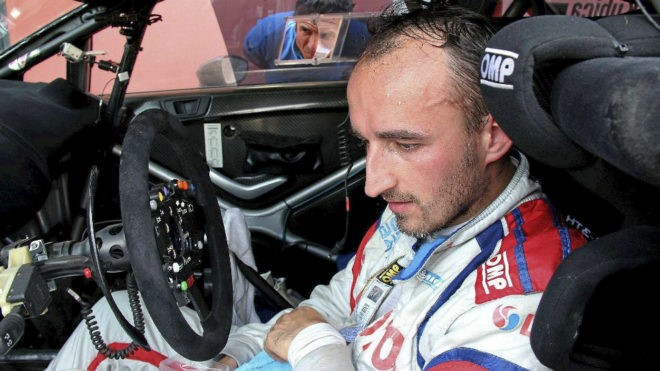
Robert Kubica in 2017.
In January 2017, he took part in the first round of the 24H Series, the Dubai 24 Hour, driving a Förch Racing Porsche 911 GT3 in the A6-Pro class with co-drivers Robert Lukas, Marcin Jedliński, Wolf Henzler and Santiago Creel. This ended in retirement with undisclosed mechanical problems.
LMP1
On 2 February 2017, Kubica was signed by the ByKolles privateer LMP1 team in the FIA World Endurance Championship. This came after he tested their car in November 2016 during the WEC rookie test at Bahrain and lapped faster than the team's regulars managed on the race weekend. Oliver Webb will remain with the team, with a third driver for the Nissan-powered CLM P1/01 yet to be named. After the pre-season testing at Italy's Autodromo Nazionale Monza, where Kubica did not do any running, the driver announced via social media that he would not be participating in the forthcoming season.
Formula E
On 2 May 2017, Kubica partook in an independently organised test of a Formula E car at Donington Park, with an aim of partaking in the New York ePrix. This failed to eventuate.
Returning to Formula One
2017: uncontracted testing
On 5 June 2017, it was announced that Kubica would be driving in a Renault-organized test of their 2012 car, the Lotus E20, at Circuit Ricardo Tormo, his first Formula One event since his accident in 2011.
Renault organised a further test, with Renault boss Cyril Abiteboul stating that 'he was still quick, still consistent and more importantly he still has the enthusiasm he always carried to the team'. He added that there were 'no obvious roadblocks' to an F1 return and told NBC Sports that Kubica could be an option for 2018.
On 24 July 2017, it was announced that Kubica would participate in the test for Renault, which would be held after the conclusion of the Hungarian Grand Prix. Abiteboul, Renault's team boss, said the test will allow the team to fully assess Kubica's current capabilities and how likely he might be to "return to competition in the upcoming years". Kubica completed 142 laps of the Hungaroring on his return, finishing fourth-fastest nearly 1.5 seconds behind Sebastian Vettel.
On 11 October 2017, Kubica completed a one-day test with Williams at Silverstone driving the 2014 FW36. On 17 October 2017, he had a second day of testing with Williams at the Hungaroring.
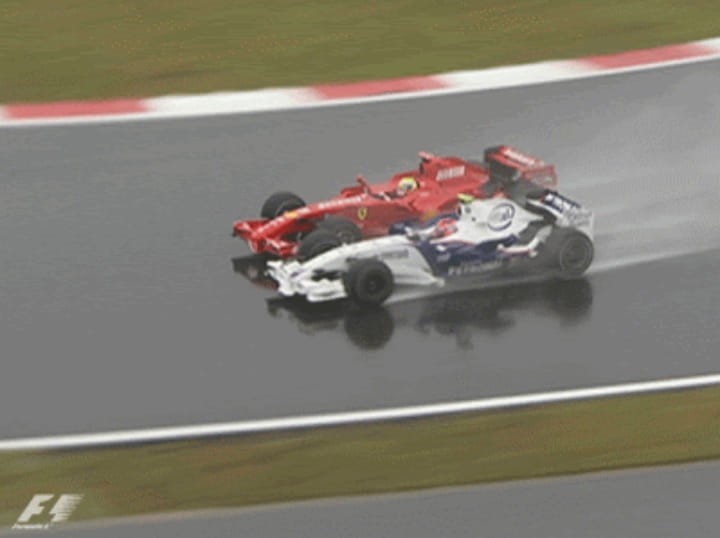
“The best duel was certainly the one with Felipe Massa at Fuji in 2007, with at least four or five corners in which we badly hip-checked ourselves. He had stopped to change the tires, I had worn ones and we were in the last laps. Nowadays they would have heavily sanctioned us. That overtaking made me a bit upset, because I lost my position and he had used the whole escape route." Robert Kubica
After Felipe Massa announced his retirement from the sport for the second time, Kubica became one of the top contenders to take his seat at Williams Martini Racing.
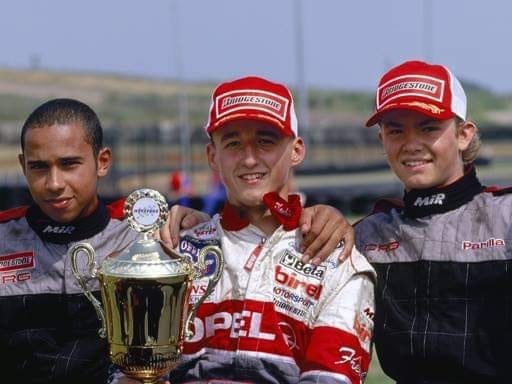
"I could go to races often and be in touch with friends, but I decided to avoid it. Not because I'm hostile but because of what it reminds me of. Honestly, it's not easy to watch the Grands Prix. I see how Lewis and Nico fight for the championship and I miss the fight with them .." Robert Kubica
Robert then tested for Williams at the Yas Marina Circuit following the 2017 Abu Dhabi Grand Prix, completing 100 laps in his first test with the team's 2017 FW40. He completed an additional 28 laps the next day and finished seventh fastest, with Williams technical chief Paddy Lowe reporting that "there are no issues around" his injuries, though doubts soon emerged about whether certain factors had made the times look better.
Williams
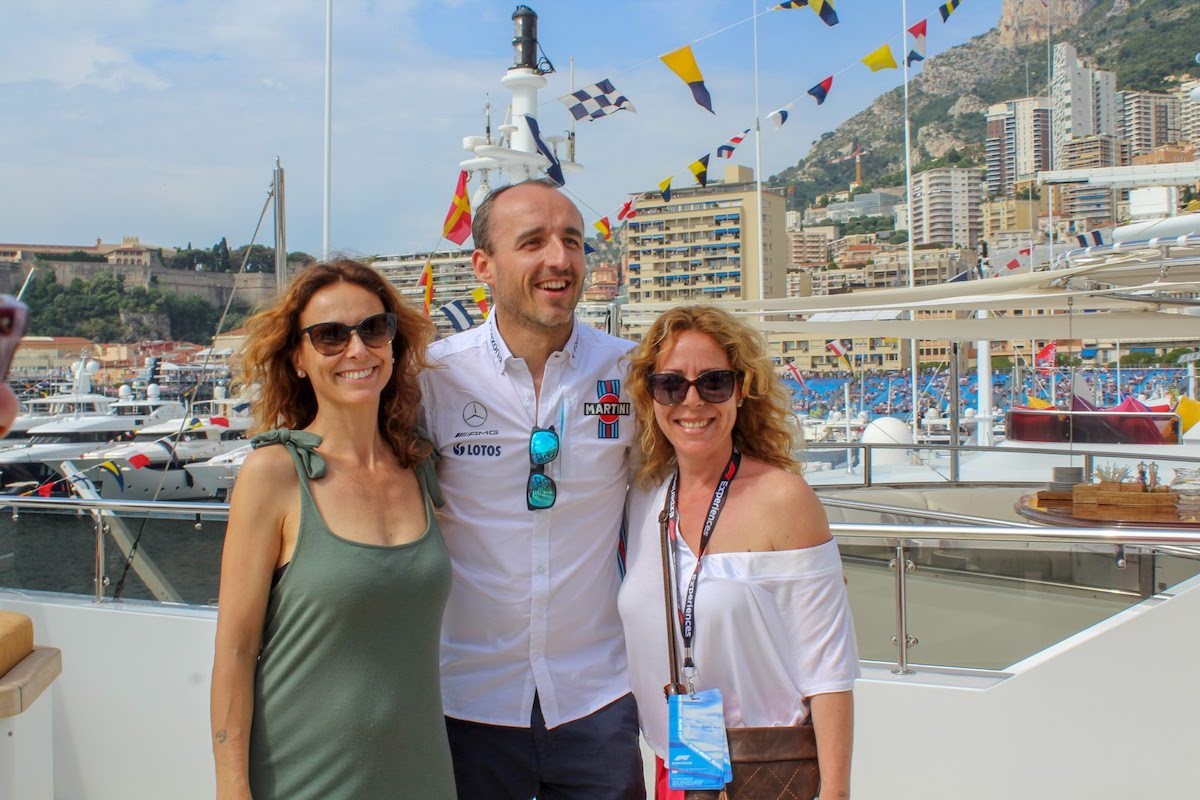
Robert Kubica in Monaco in 2018. F1 Experiences.
2018 season: reserve driver for Williams
On 16 January 2018, it was announced that Kubica would become the reserve driver of Williams for the 2018 season.
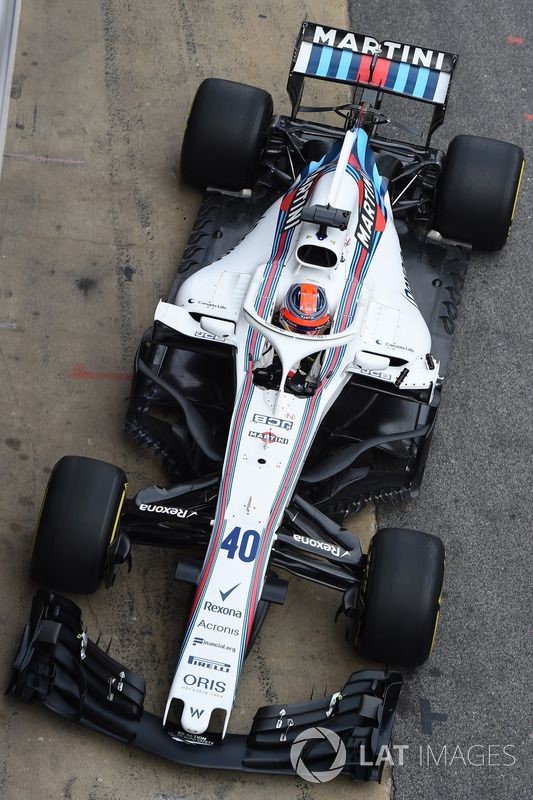
Robert Kubica, Williams FW41, at Barcelona 2018 testing.
He took part in his first Grand Prix weekend since the final round of the 2010 campaign, in Friday's first practice session at the 2018 Spanish Grand Prix, outperforming teammate Lance Stroll.
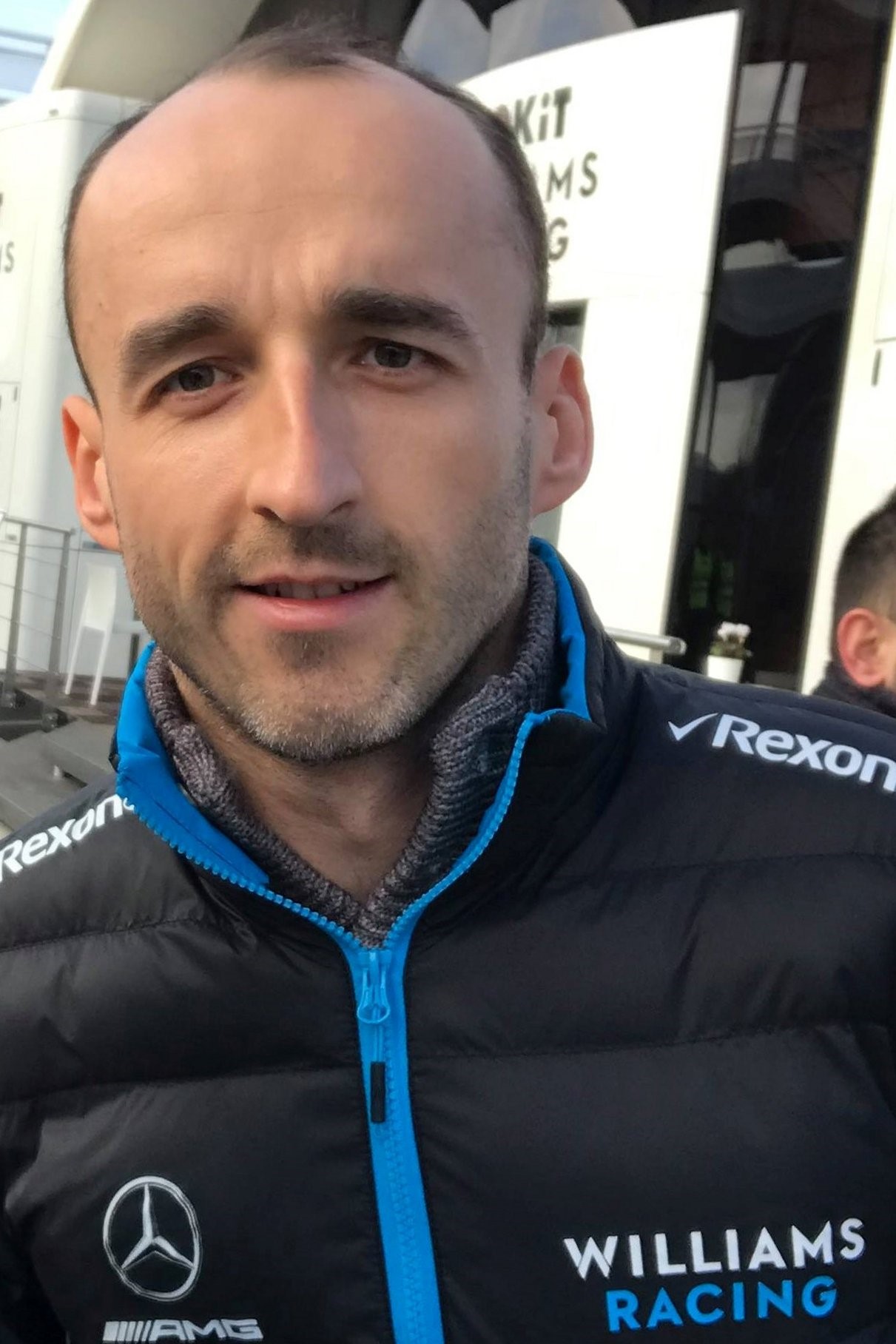
Robert Kubica at 2019 Formula One tests in Barcelona.
2019 season: full-time racing seat
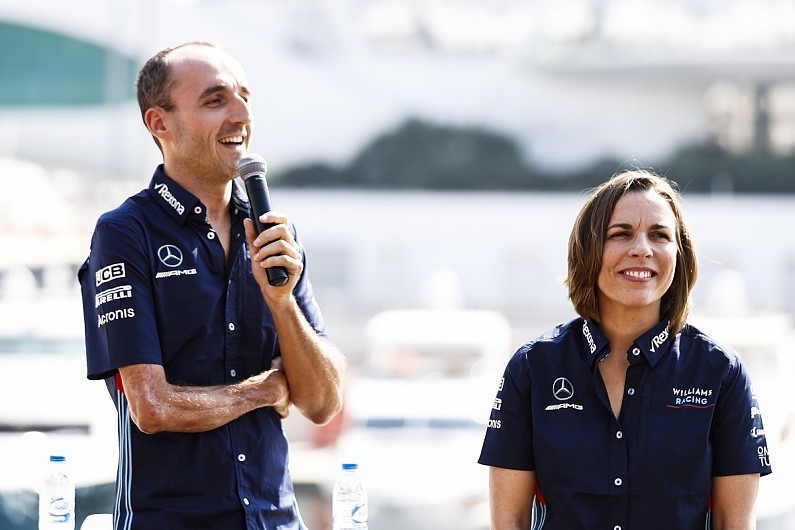
Williams announces Robert Kubica's 2019 Formula 1 racing return. In the photo Robert Kubica and Claire Williams.
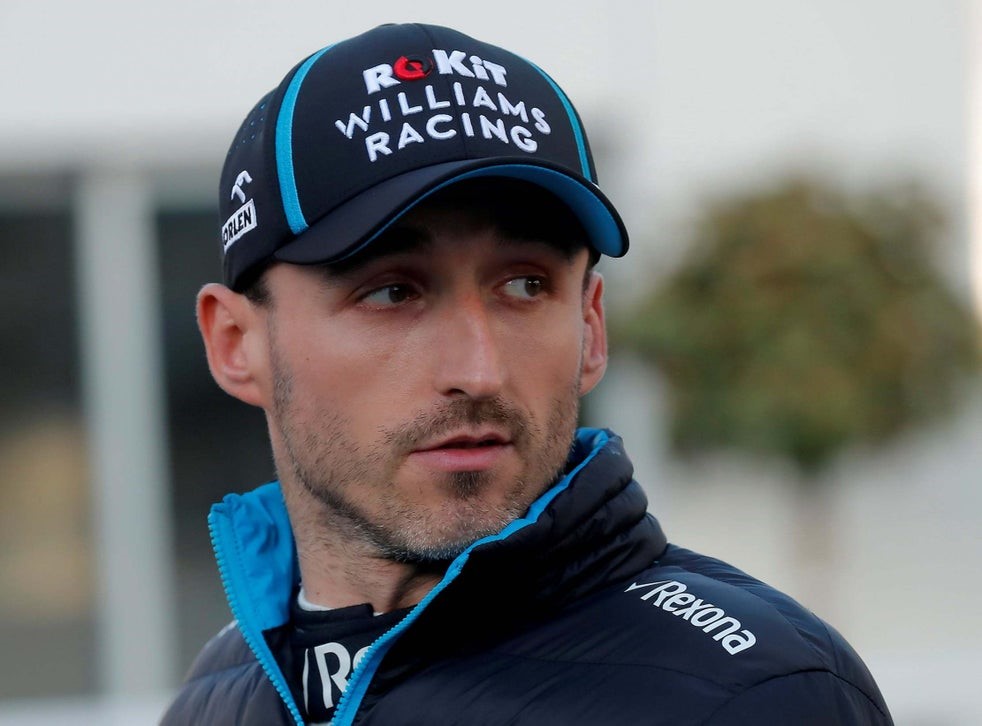
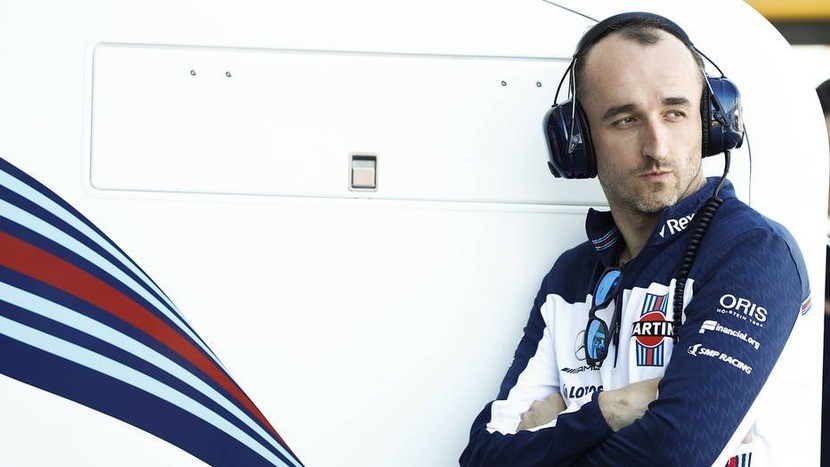
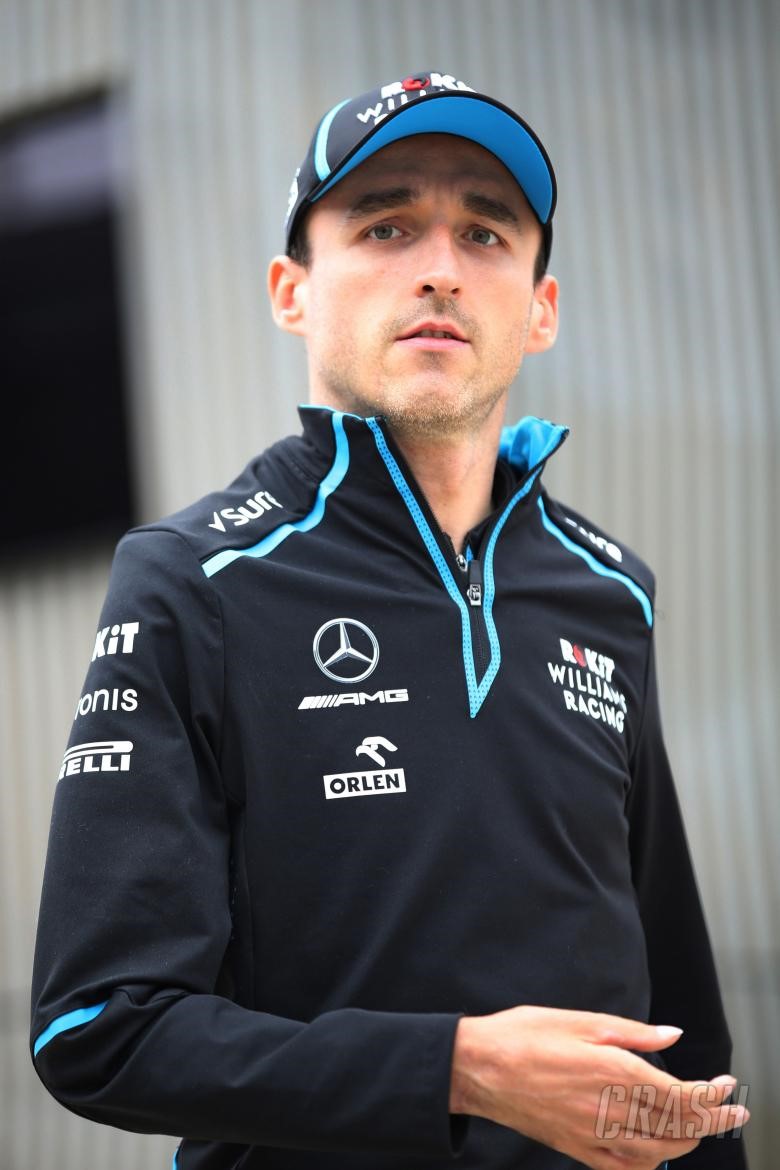
Before the final round of the 2018 season, Williams announced that Kubica would race full-time for the team in 2019, partnering 2018 Formula 2 champion George Russell. Kubica chose 88 as his driver number, previously used by Rio Haryanto in 2016.
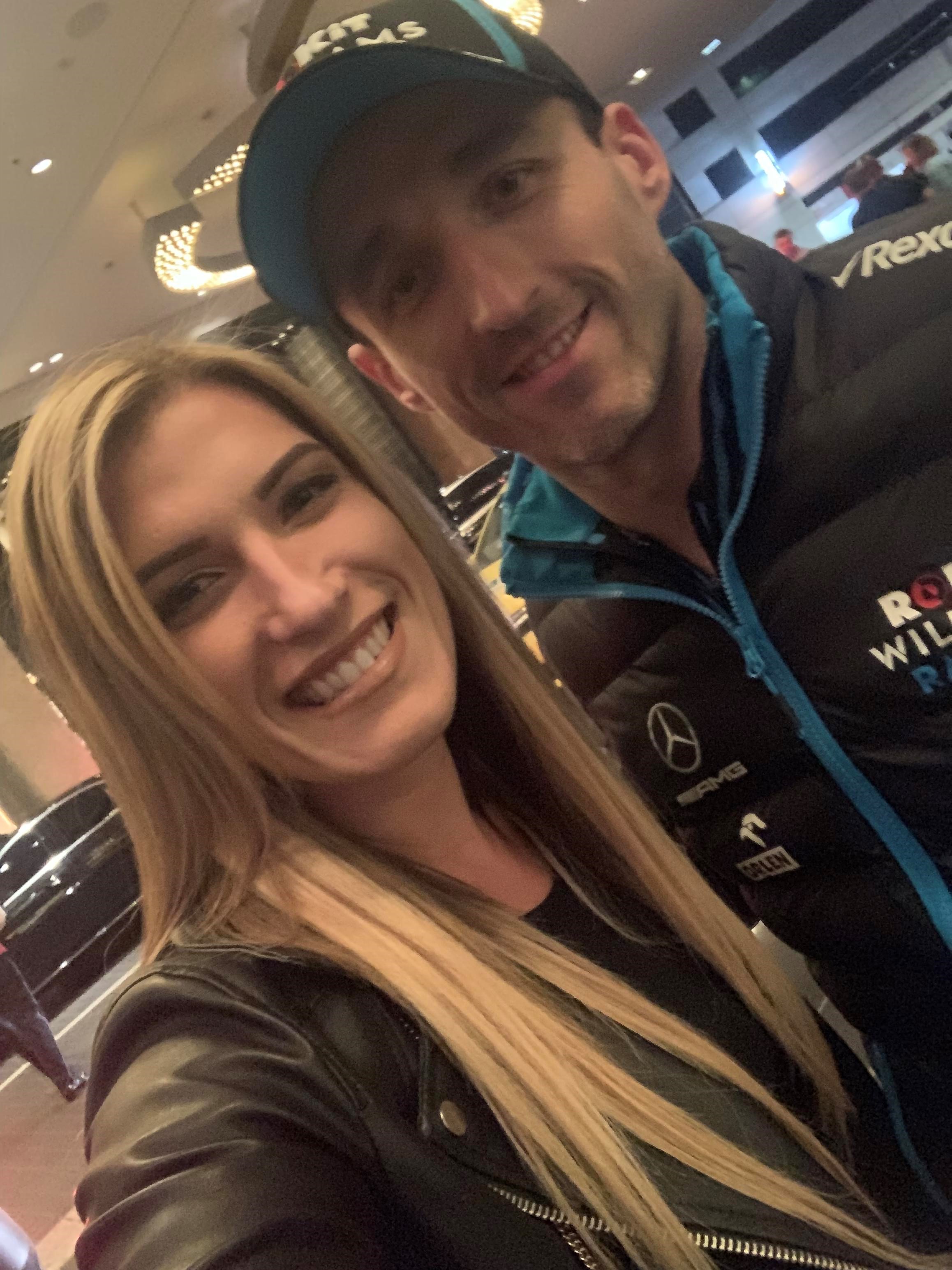
Robert Kubica in Melbourne on March 17, 2019.
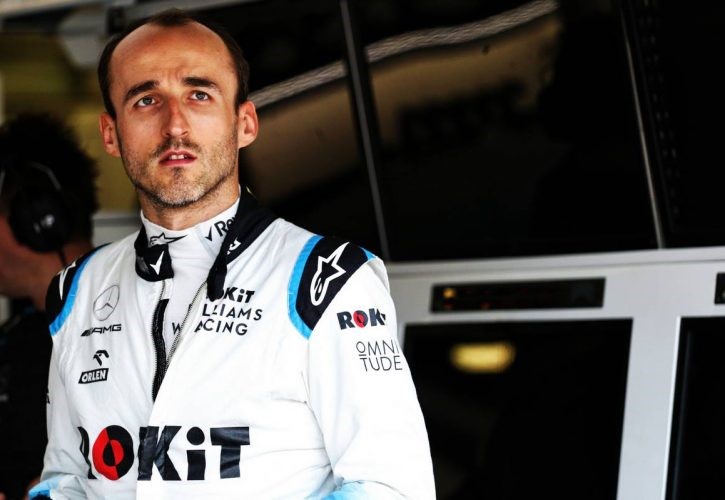
Robert Kubica at Azerbaijan GP on April 28, 2019.
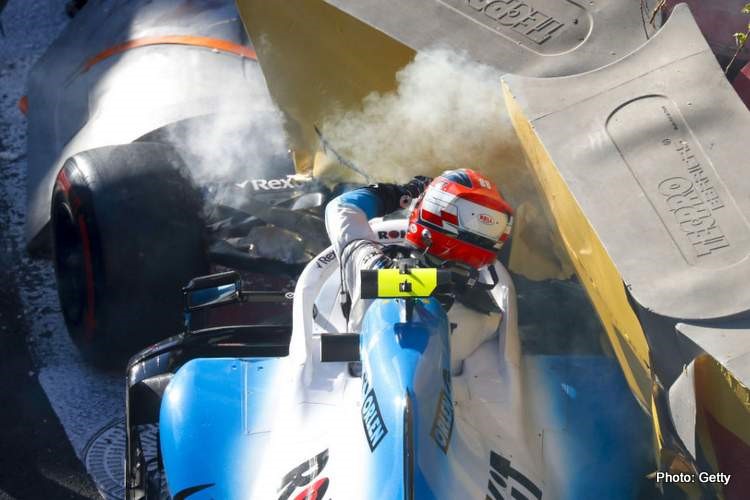
Robert Kubica crash at 2019 Azerbaijan GP. Williams driver crashes into wall at castle section. GettyImages.
The team struggled during the season, with the FW42 being the slowest car of the field. Kubica finished in 12th place at the German Grand Prix, however was promoted to 10th following penalties for Kimi Räikkönen and Antonio Giovinazzi, scoring his first point since his return to F1 and breaking the record of the longest time between successive points finishes.
On 19 September 2019, before the Singapore Grand Prix, Kubica announced his decision to end his stint at Williams after the end of the season. Williams released a statement shortly after, stating that Kubica would see out the remainder of the season but would vacate his driver position for the 2020 season.
Kubica's first retirement since his return to the sport came in Russia, when Williams decided to retire his car to conserve parts after teammate Russell's race ended due to a wheel nut issue. Williams were criticised for the decision, particularly by Kubica's personal sponsors PKN Orlen. At the following race in Japan, Kubica criticised the team's decision to remove an upgraded front wing from his car for the race, after he had trialled it during practice sessions.
At the 2019 Brazilian Grand Prix, Kubica's Williams mechanics released him from his pit box way too early, narrowly avoiding hitting Max Verstappen and holding him up in the pit lane.
Kubica ended a difficult season in 19th place in the championship with 1 point, finishing ahead of rookie teammate Russell in the standings. He was replaced at the team for 2020 by 2019 Formula 2 runner-up Nicholas Latifi.
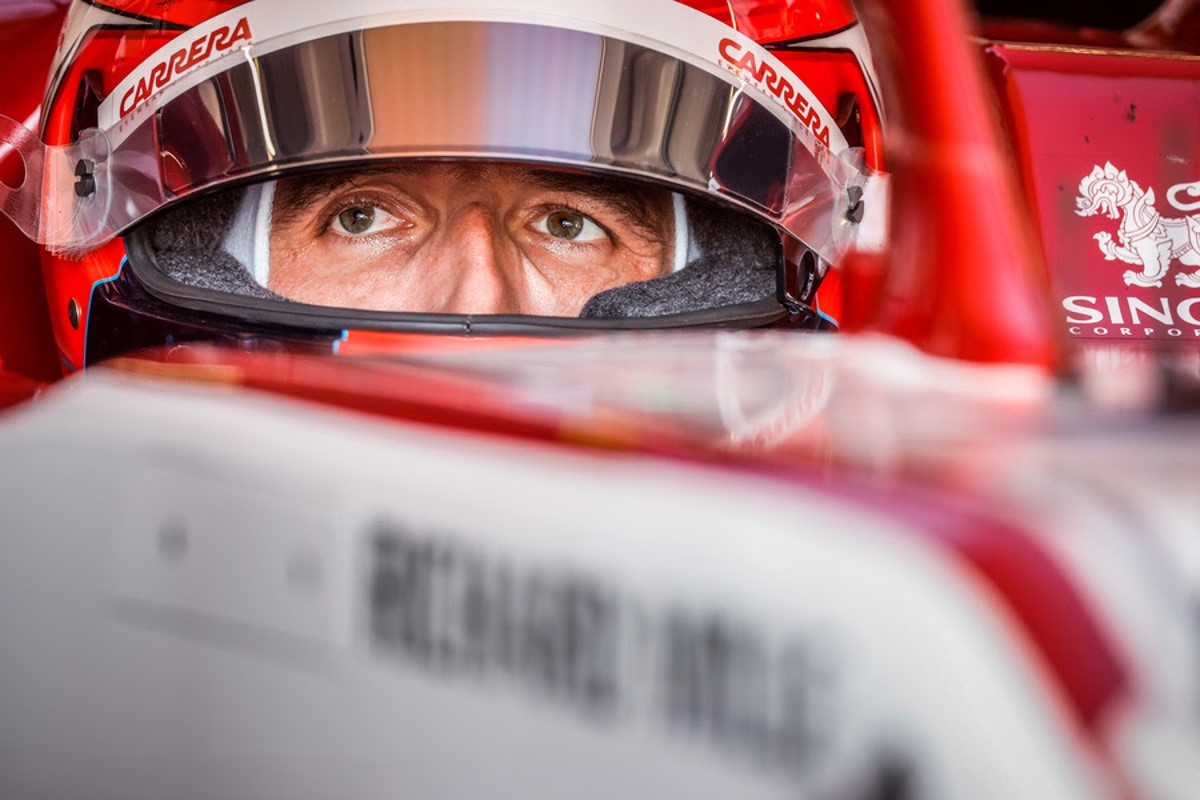
Alfa Romeo Racing Robert Kubica at British GP in Silverstone in 2020.
Alfa Romeo Racing
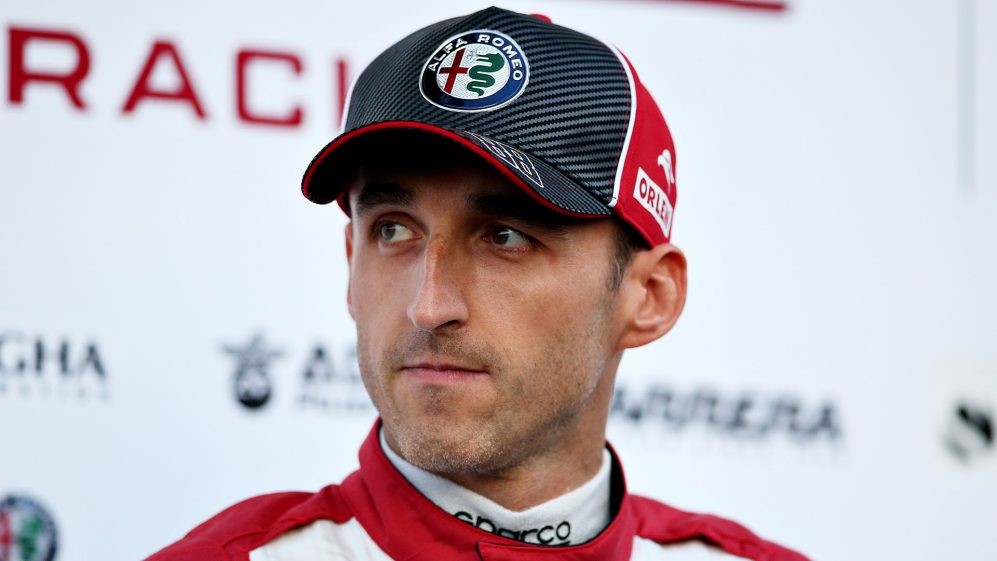
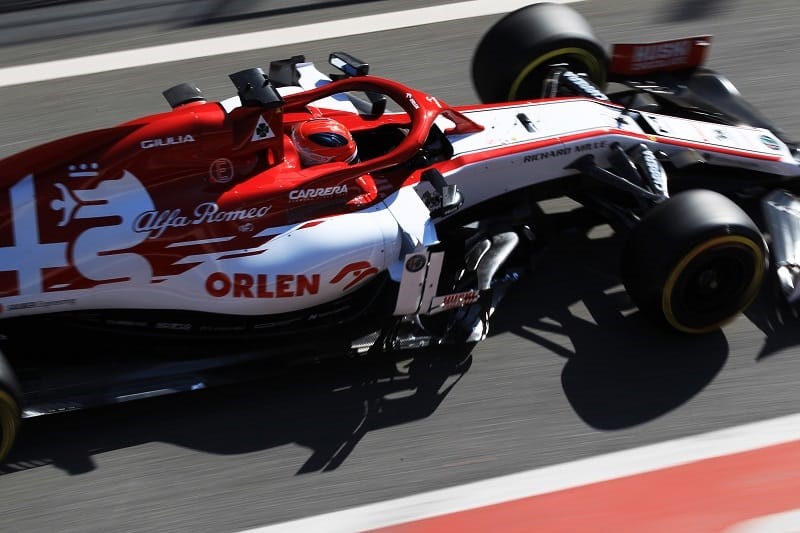
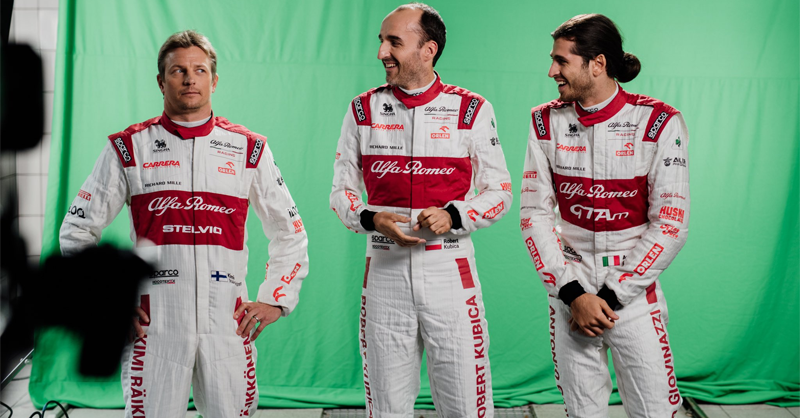
Kimi Raikkonen, Robert Kubica and Antonio Giovinazzi in 2020.
On 1 January 2020 it was announced that Kubica would join Alfa Romeo Racing in a reserve driver role for the 2020 season, returning to the team he made his Formula One debut with in 2006 (when it was still known as BMW Sauber). He competed at the pre-season test at the Circuit de Barcelona-Catalunya and set the fastest laptime during the fourth day of testing. He will be joined by 2019 FIA F2 Championship driver Tatiana Calderón.
During the season, Kubica completed tests at the Styrian and Hungarian Grands Prix.
Videos
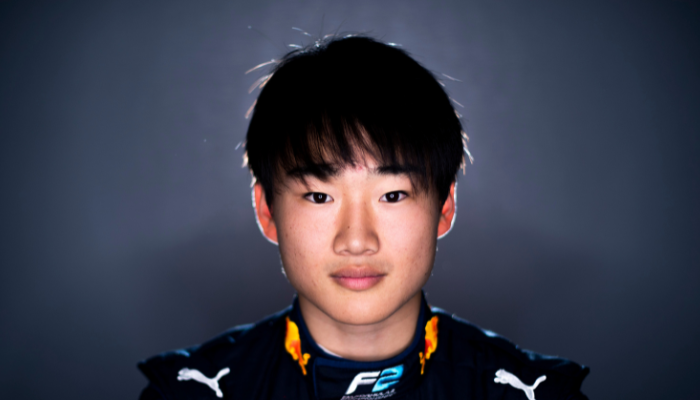
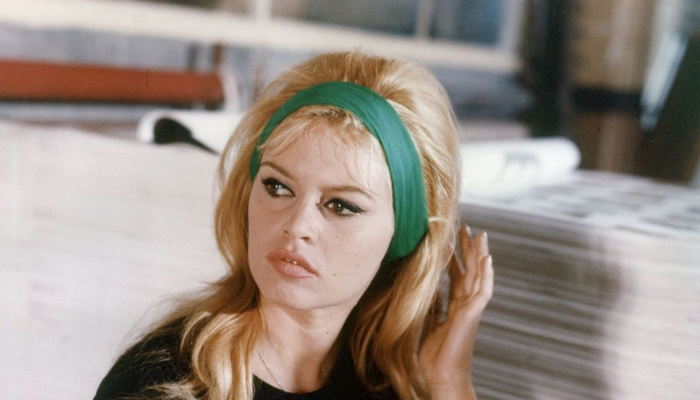
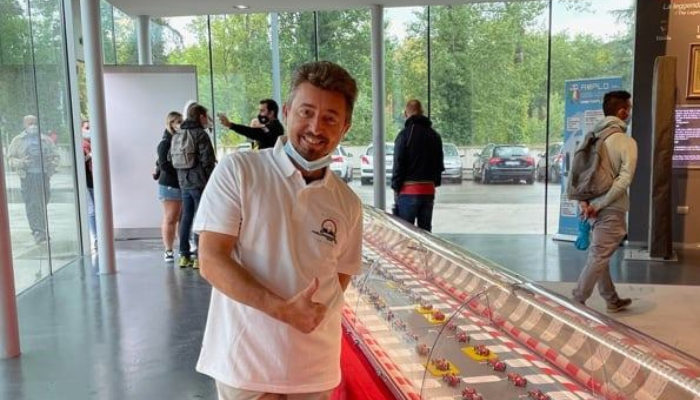
Comments
Authorize to comment